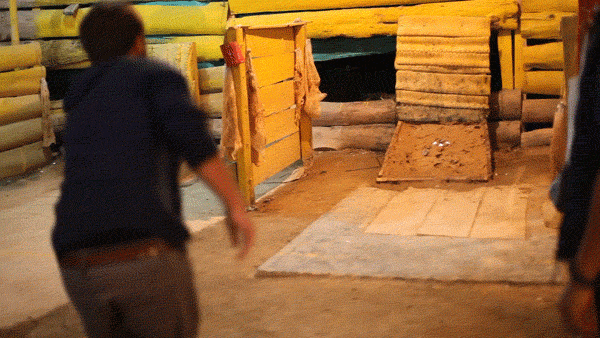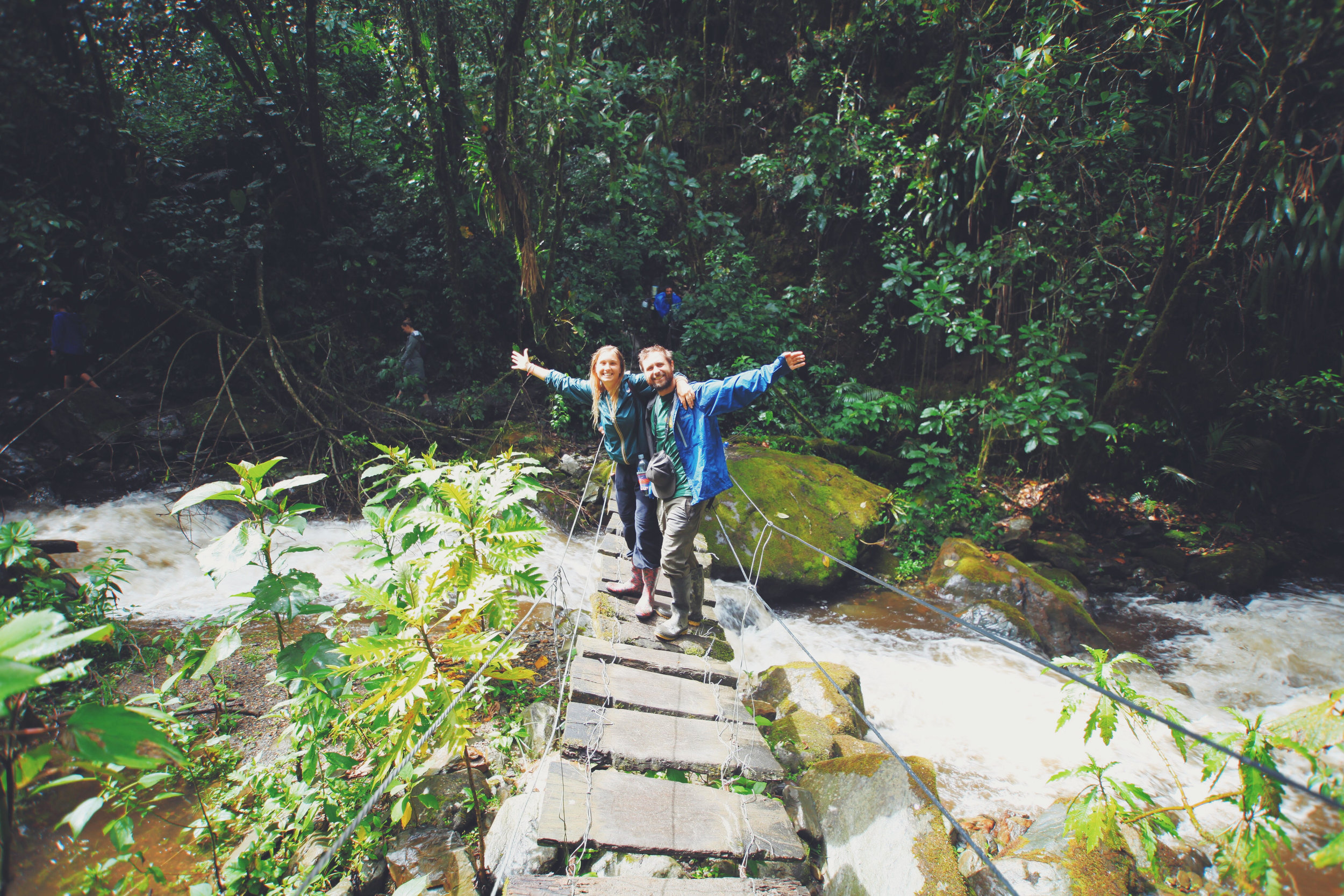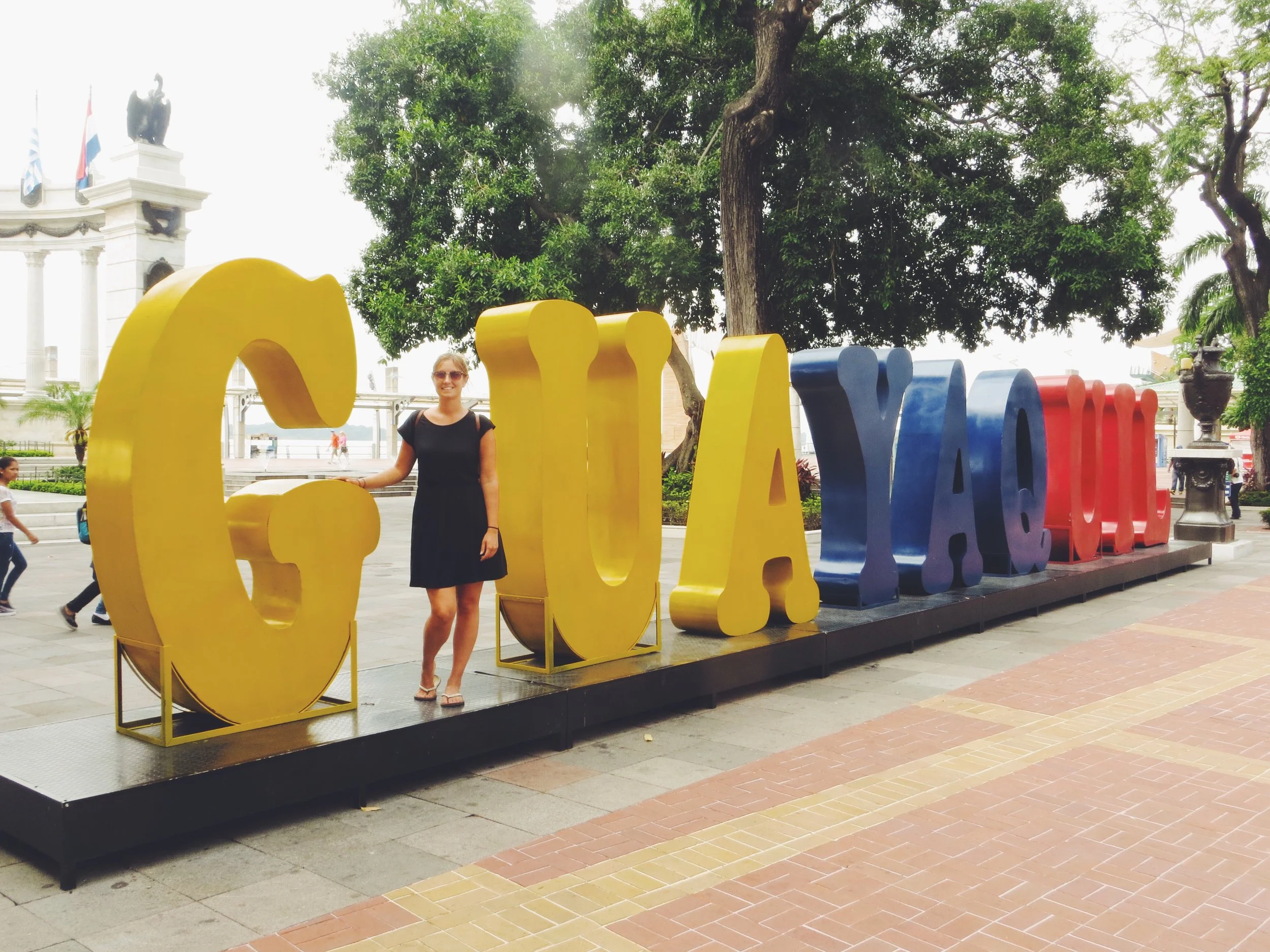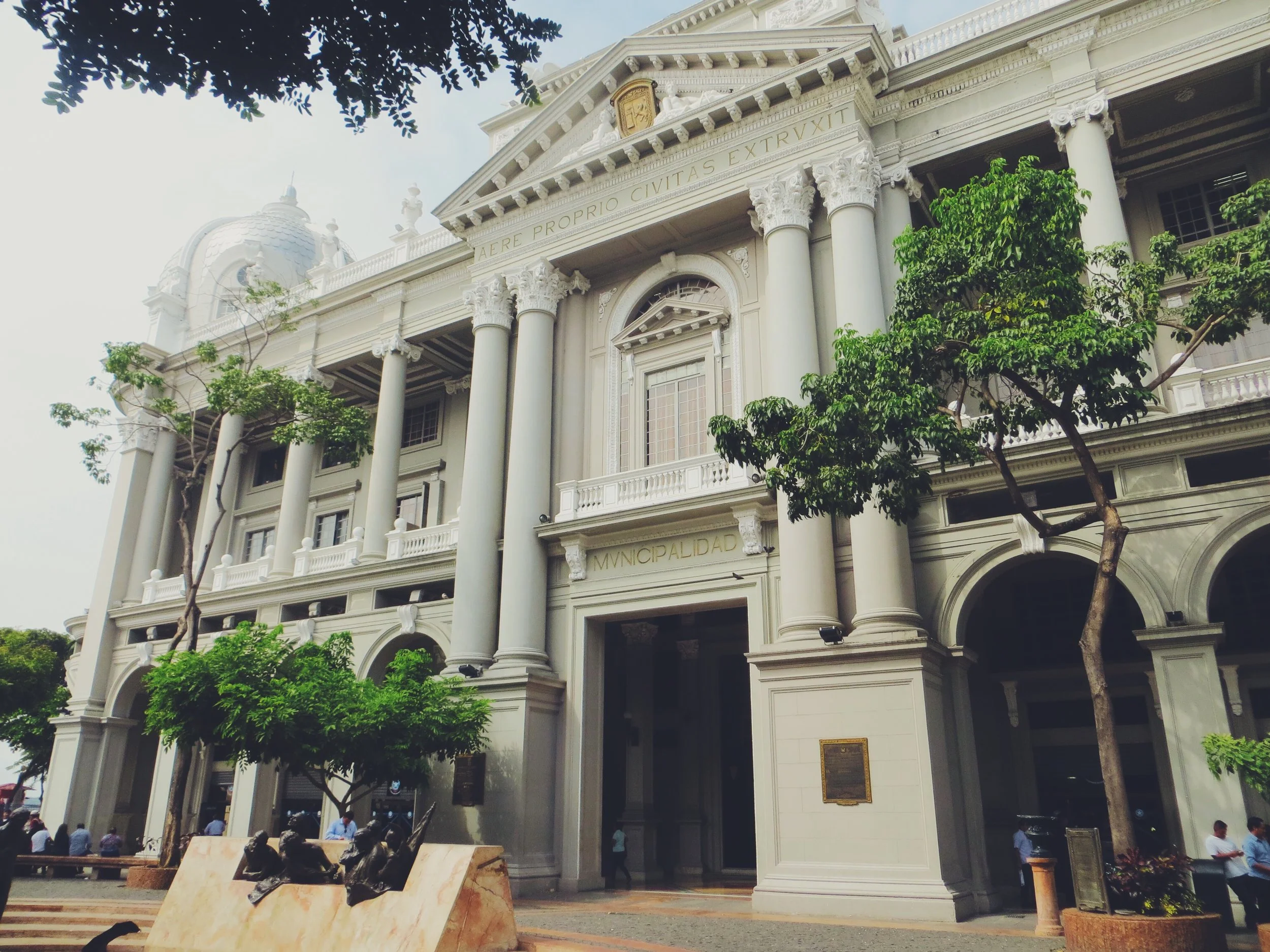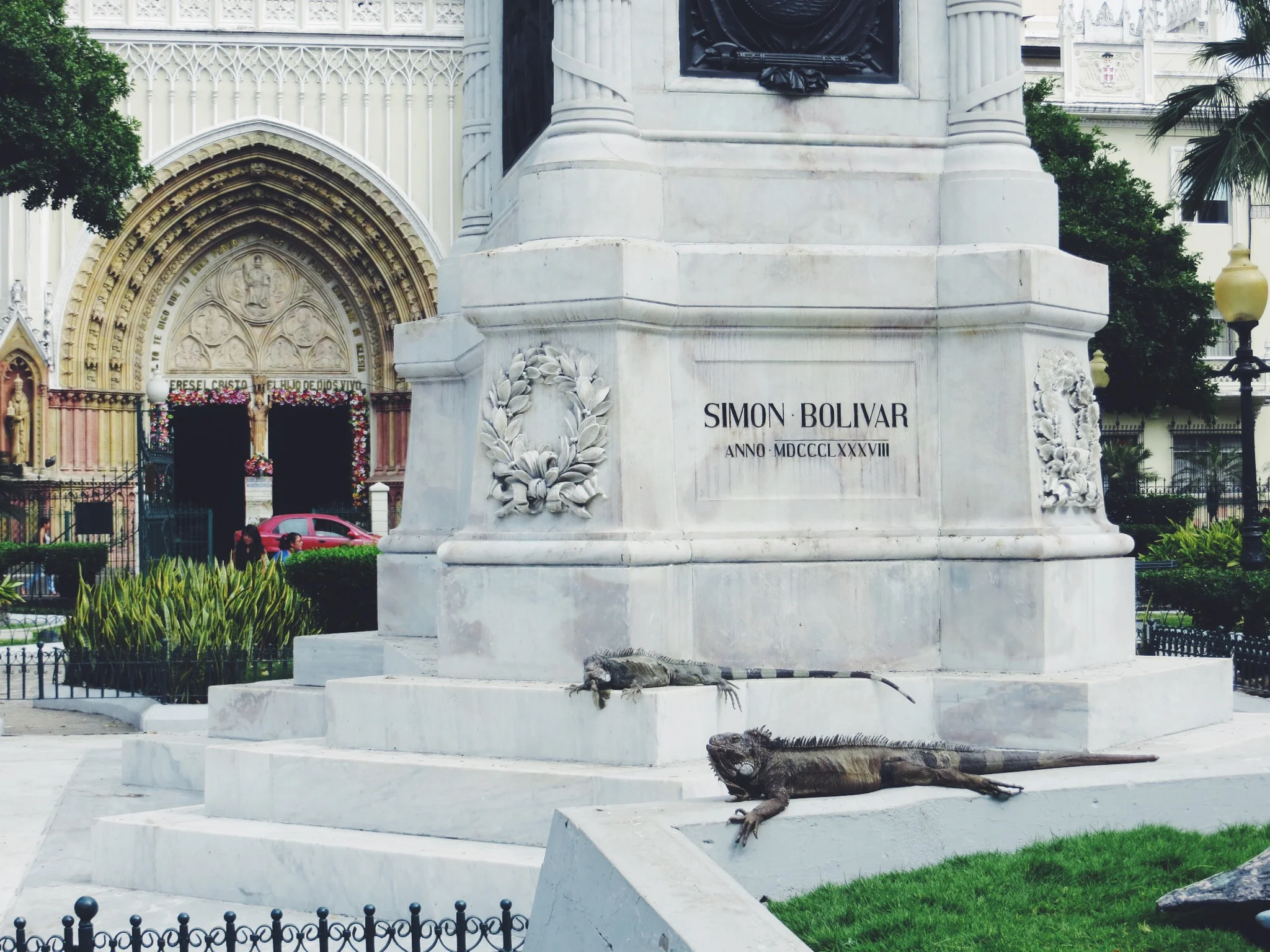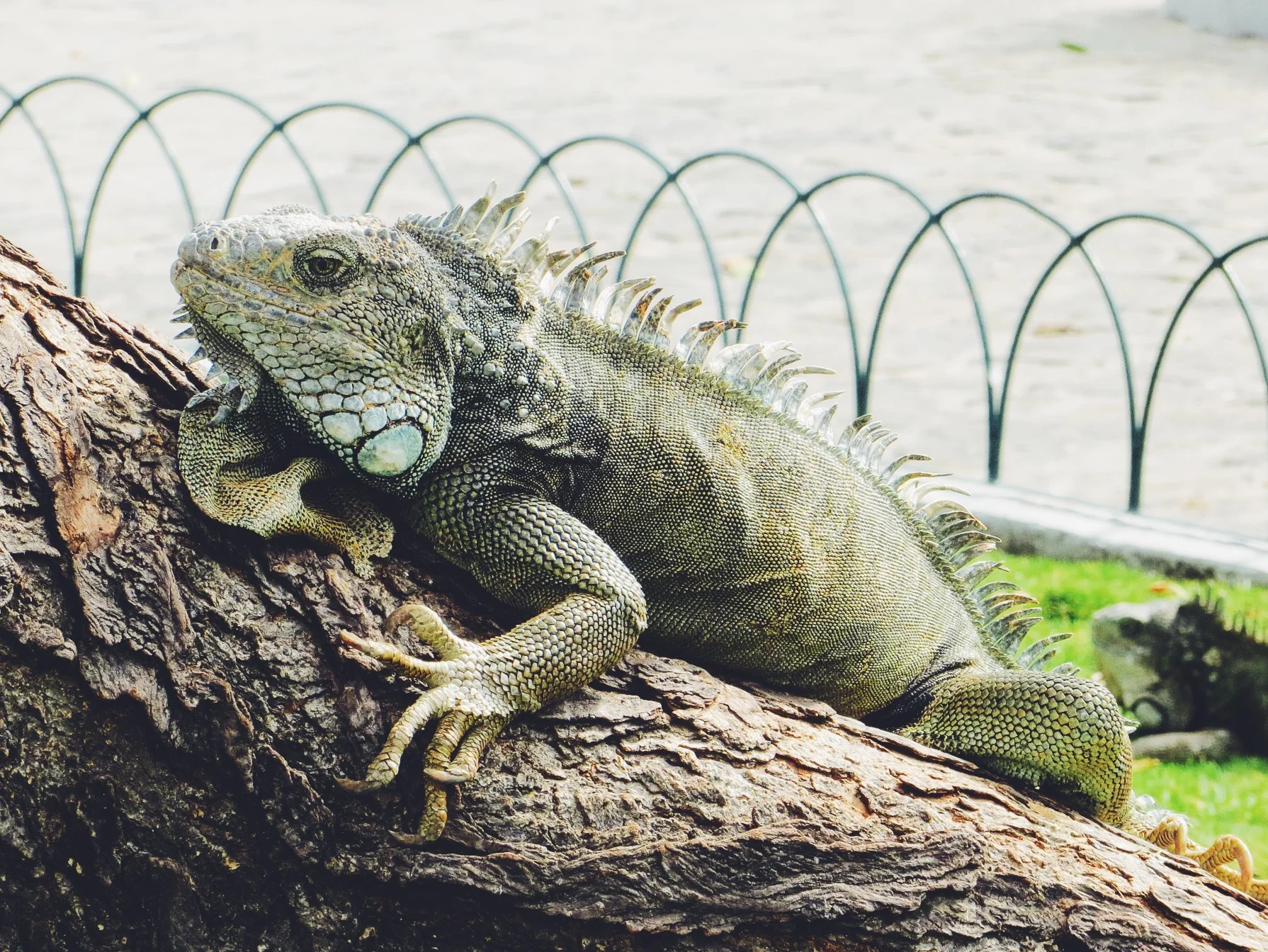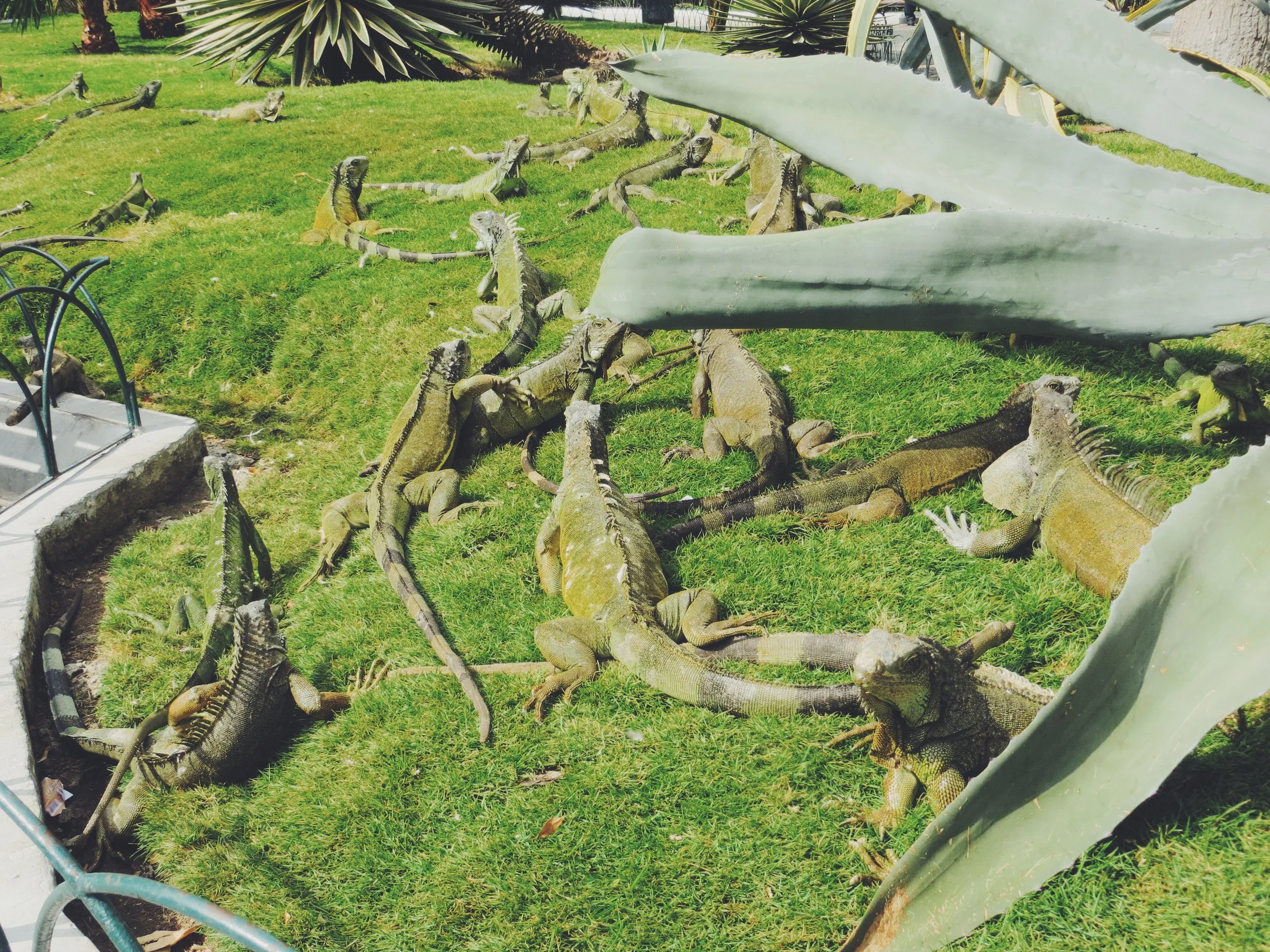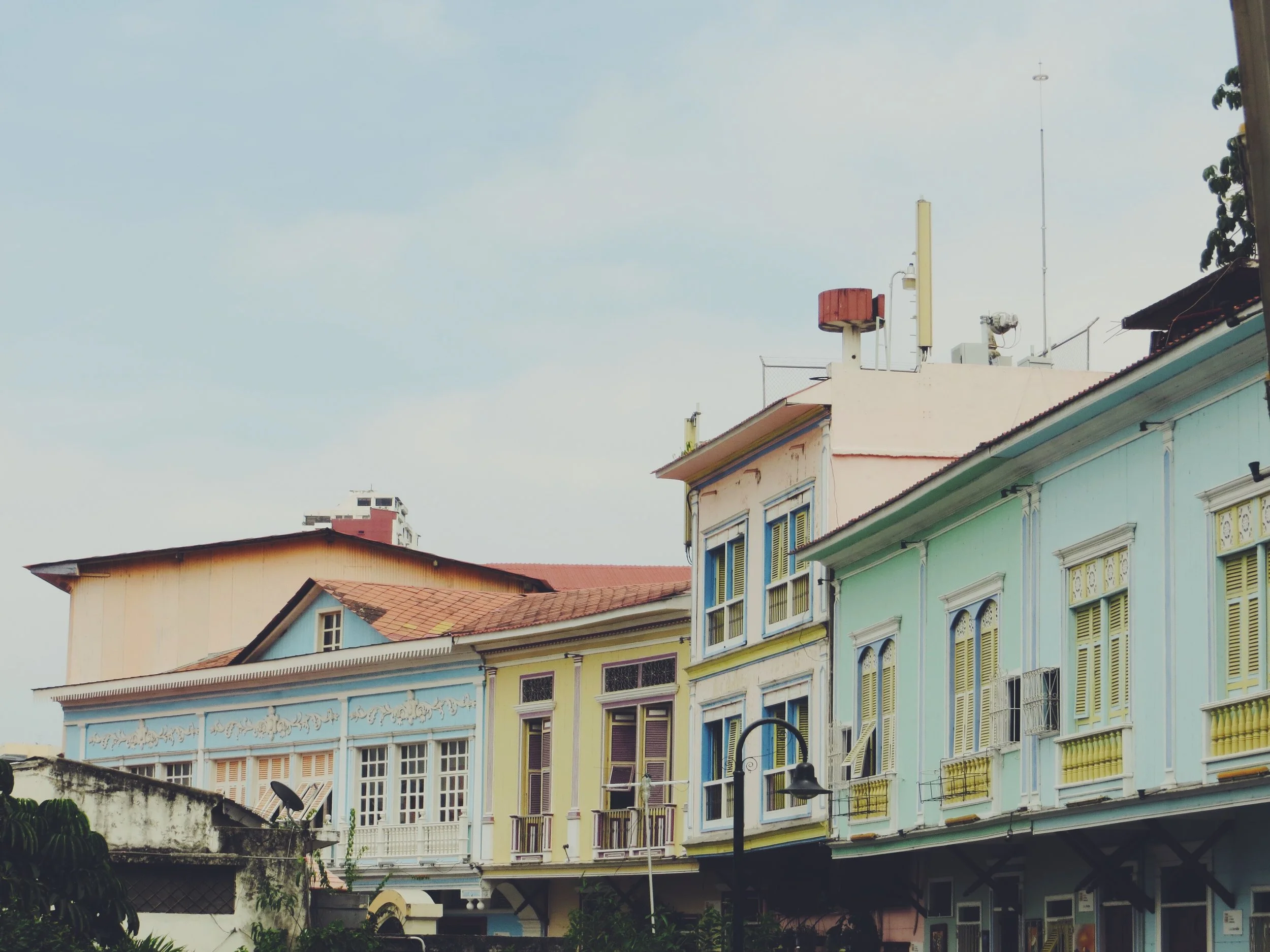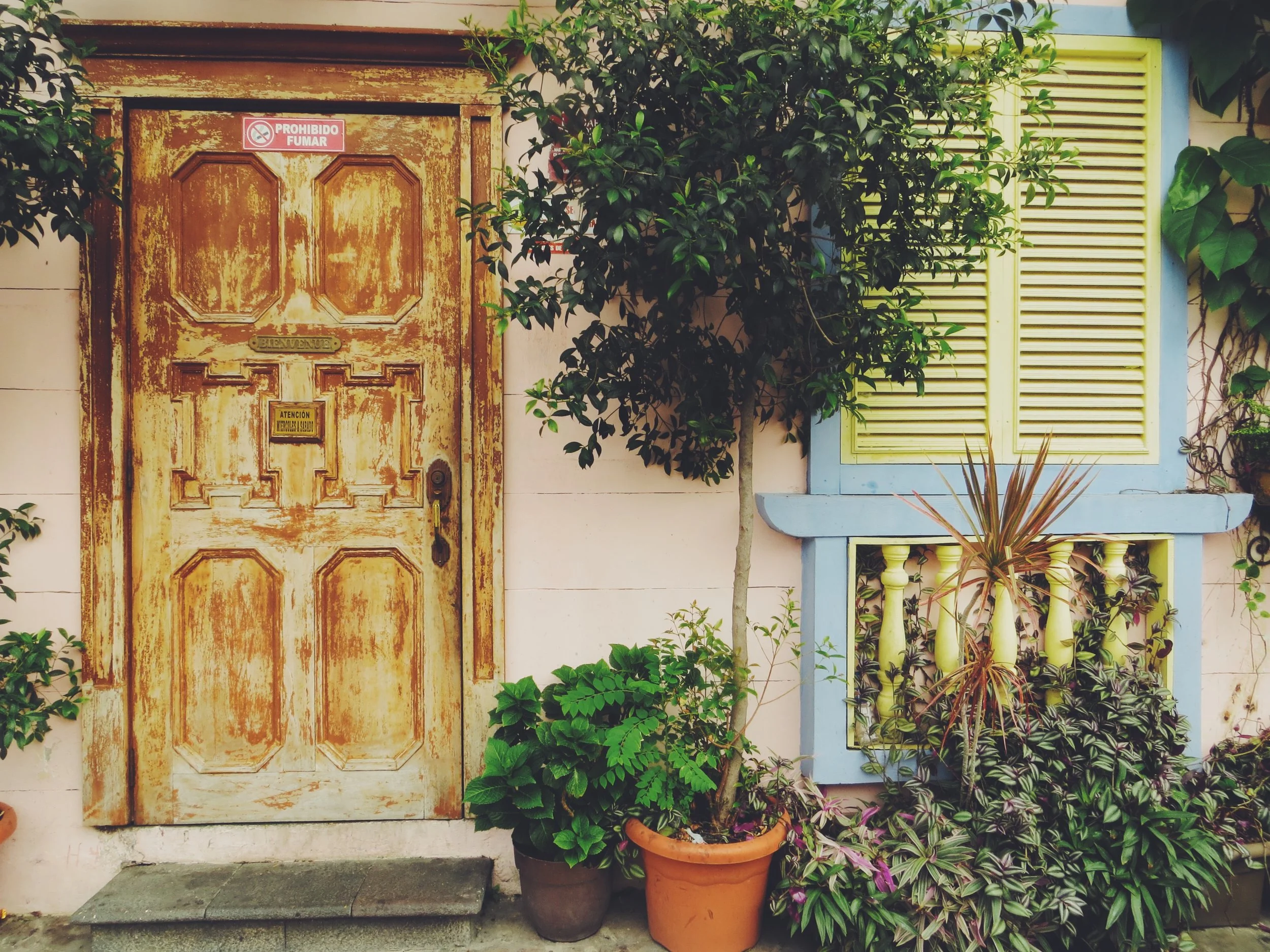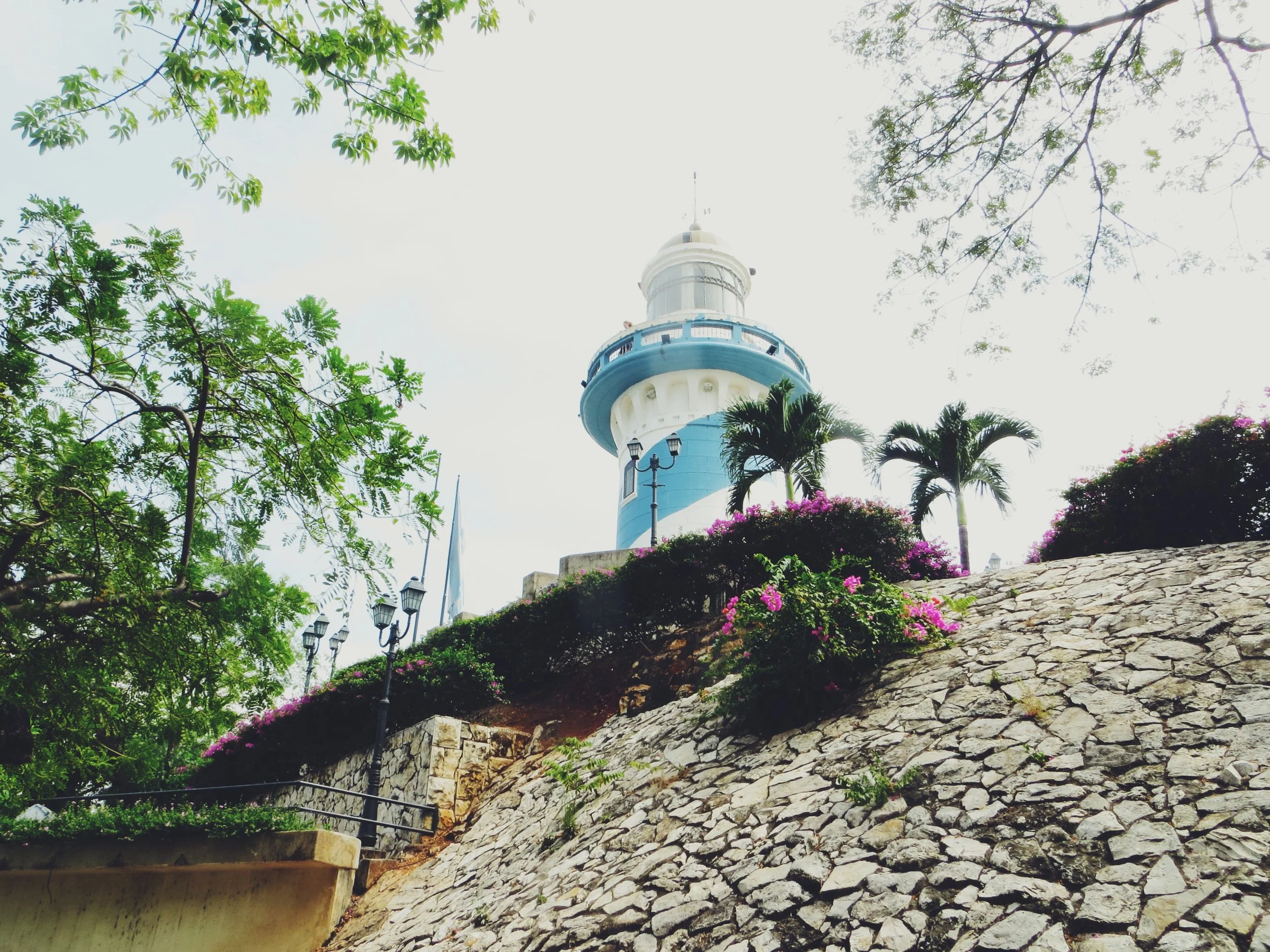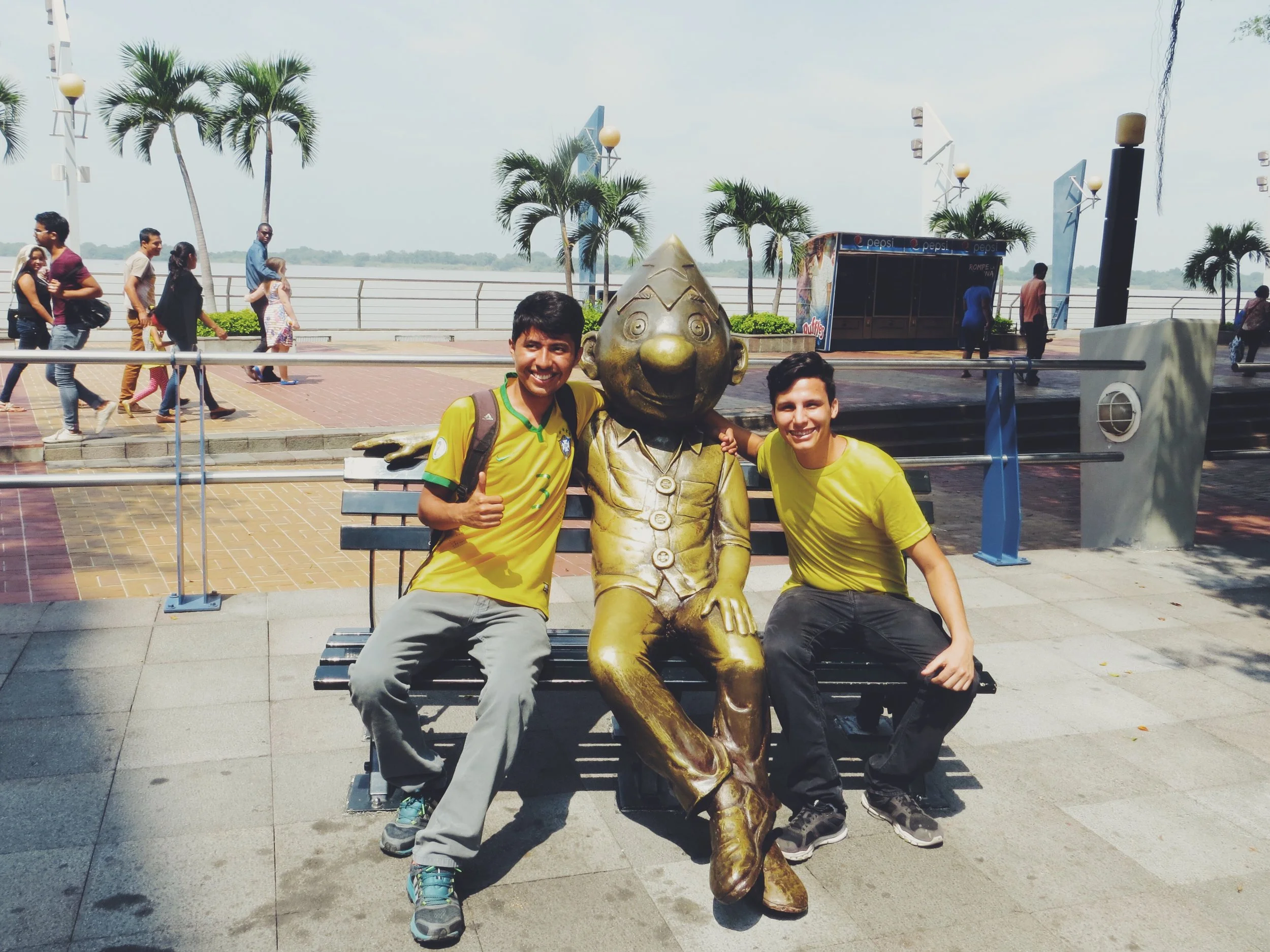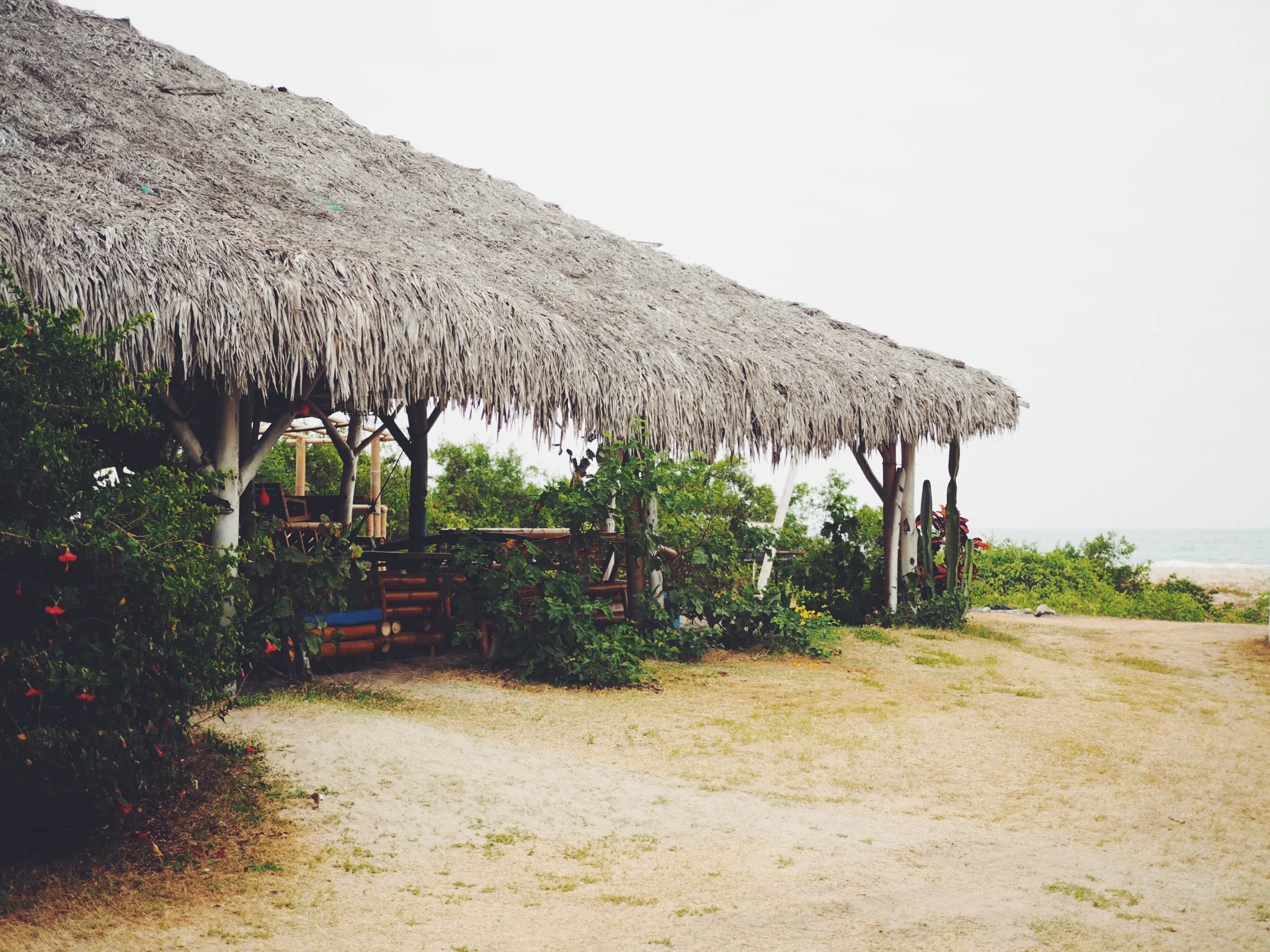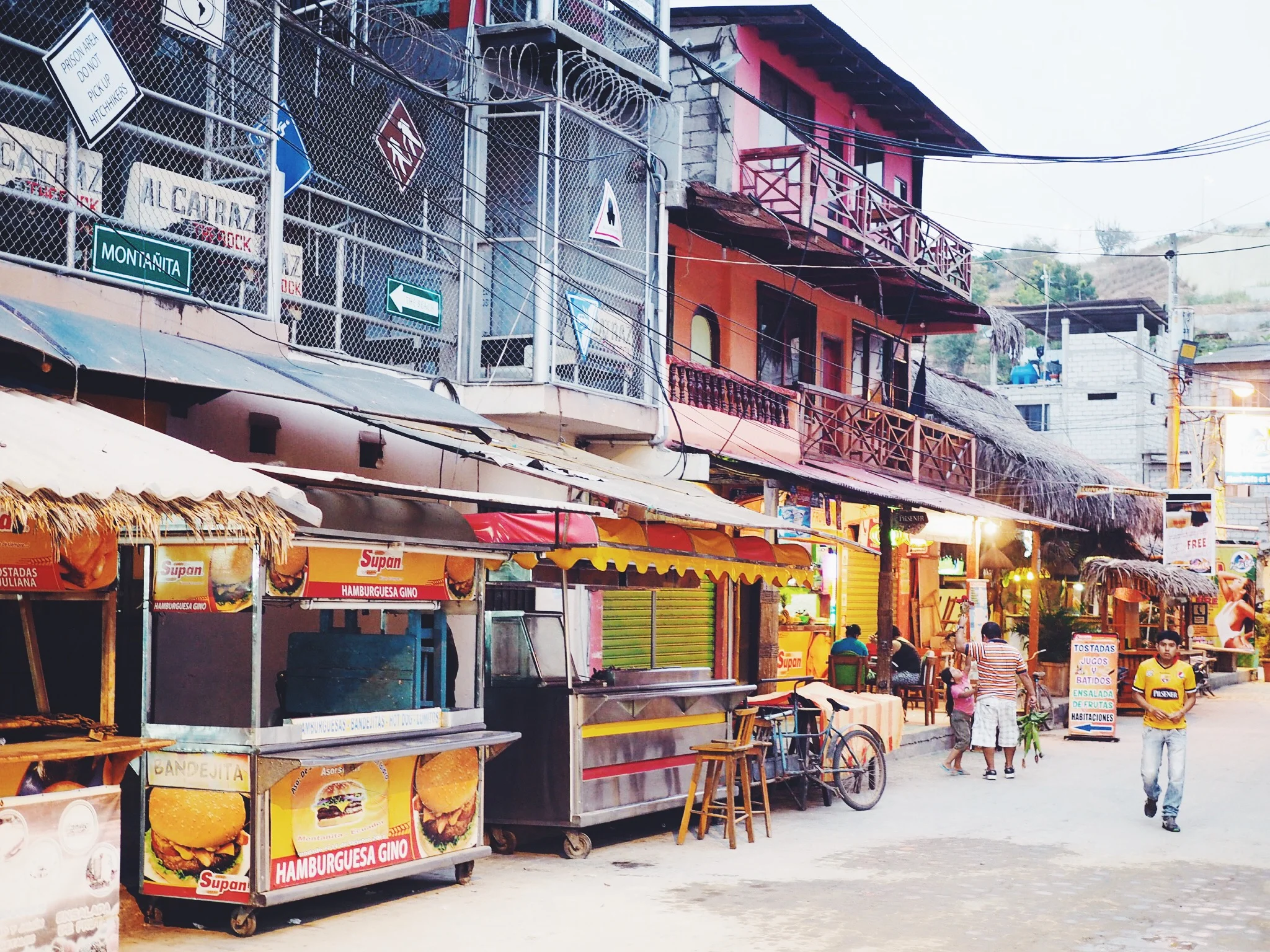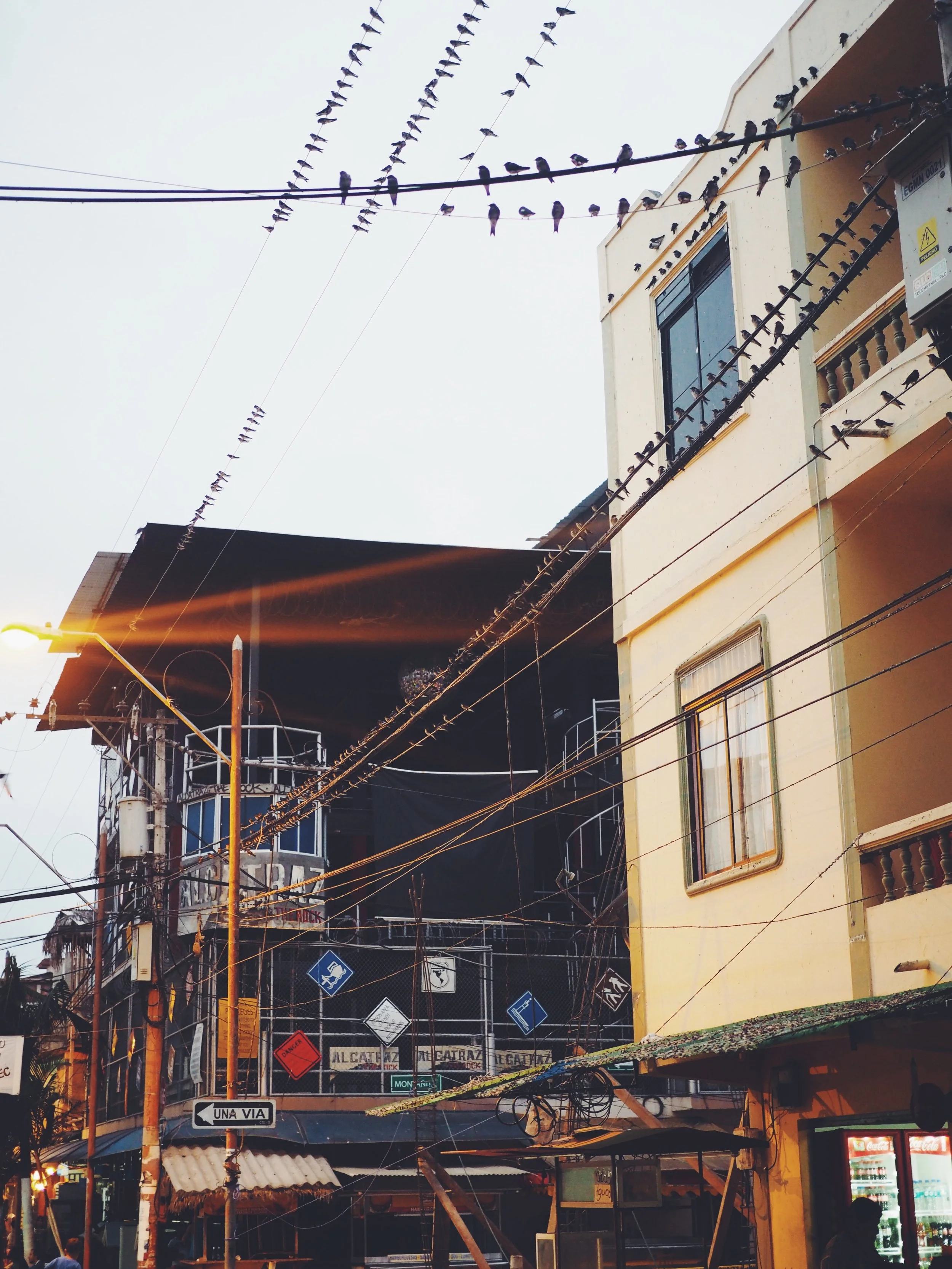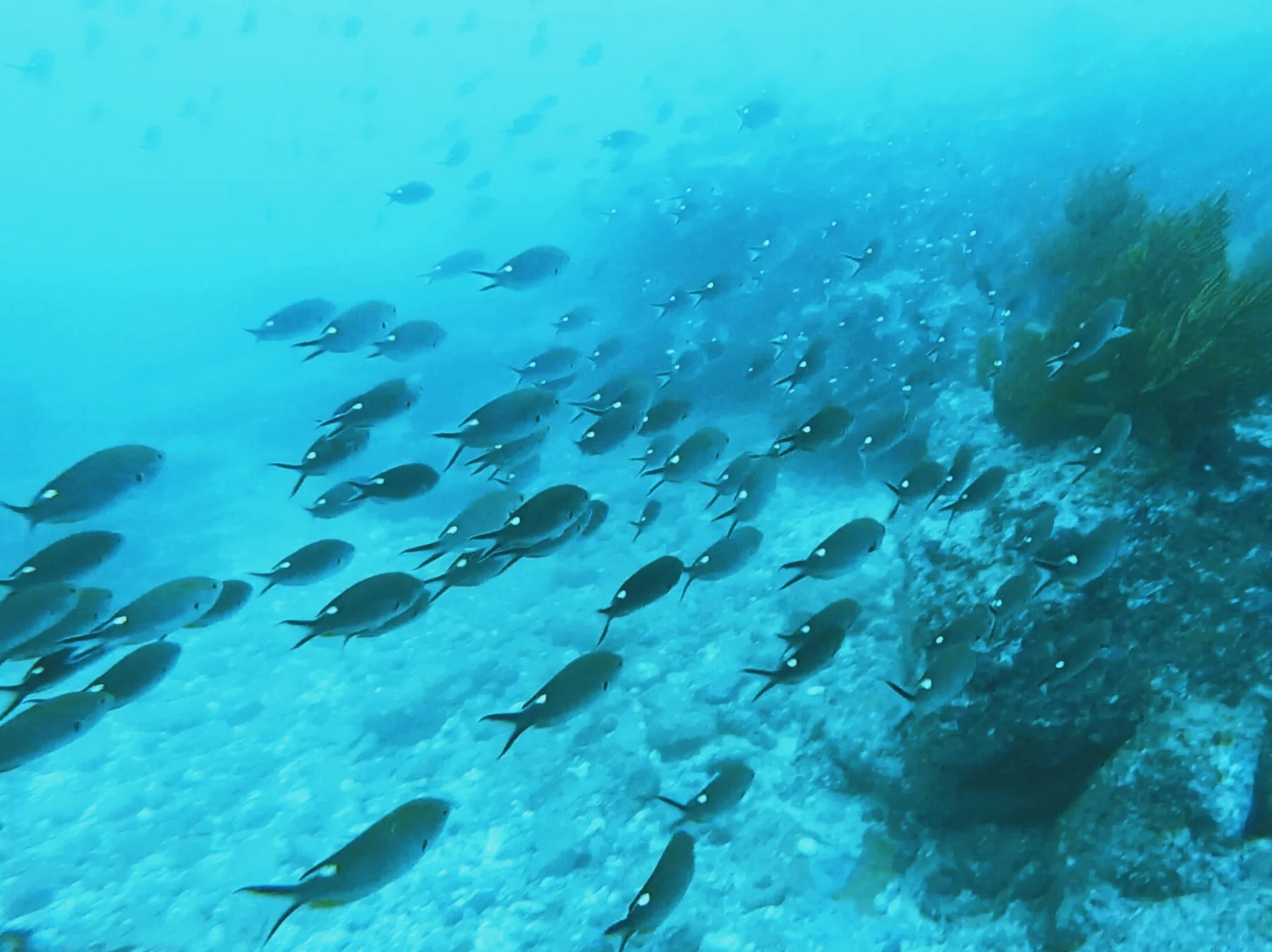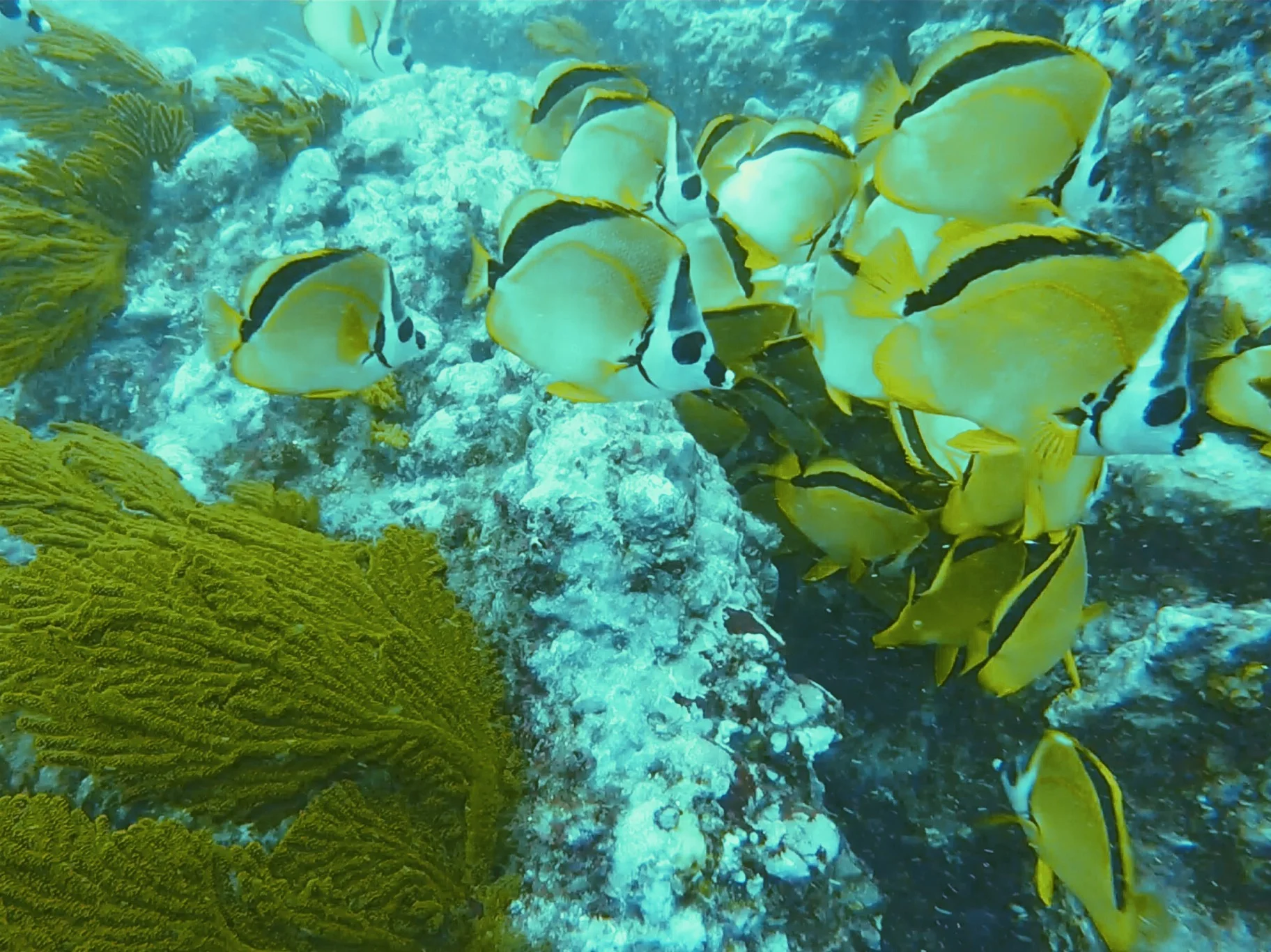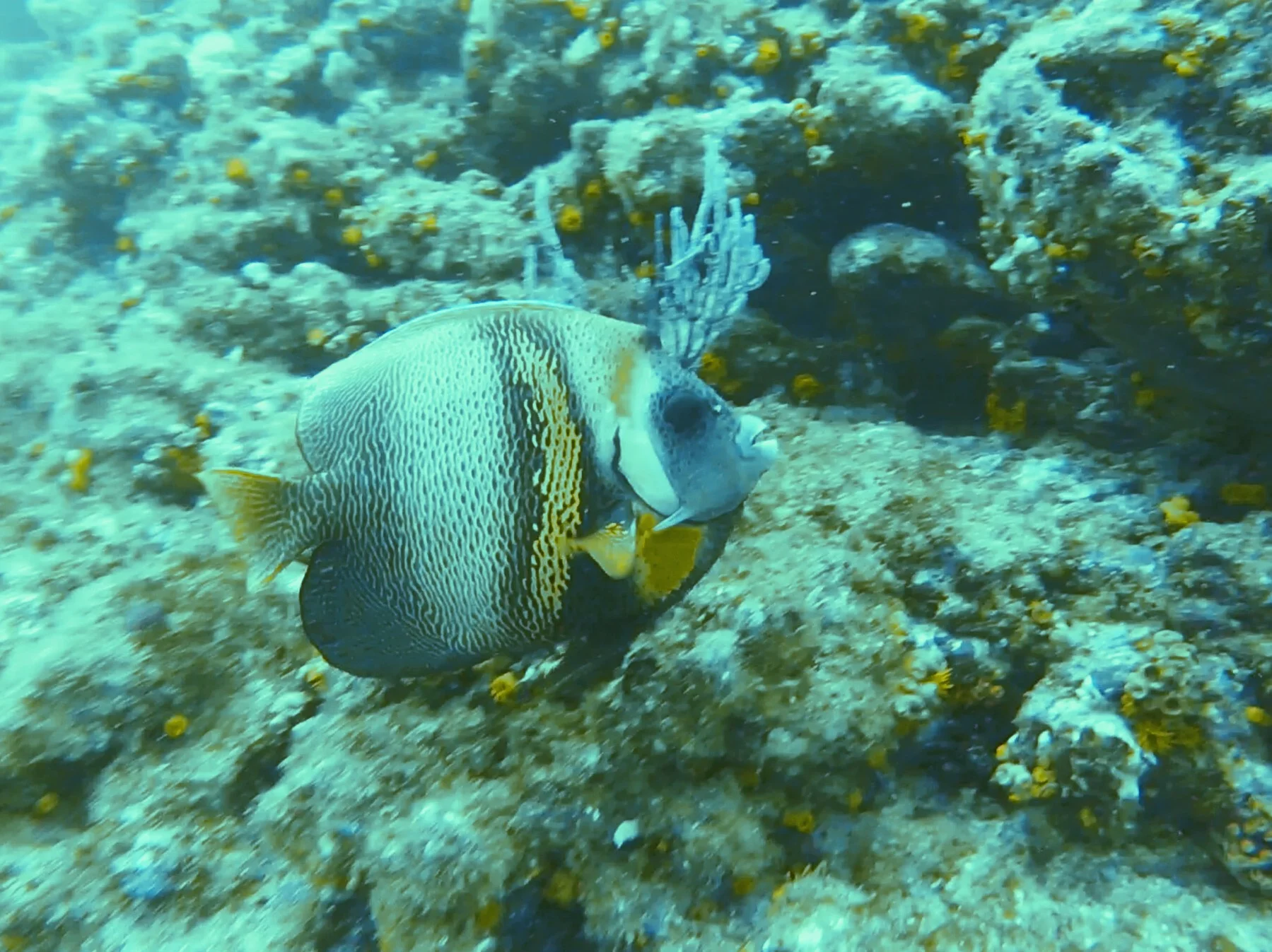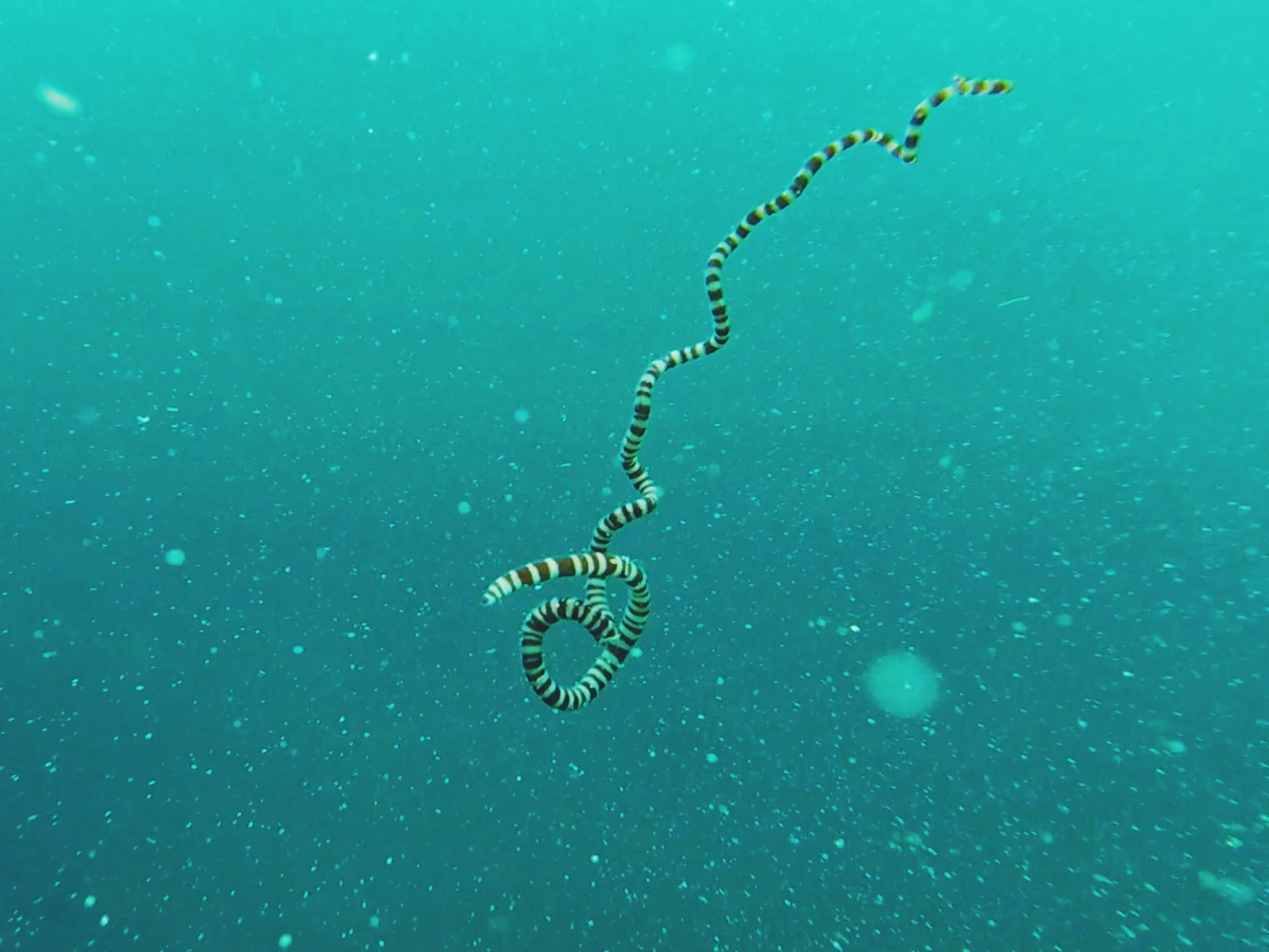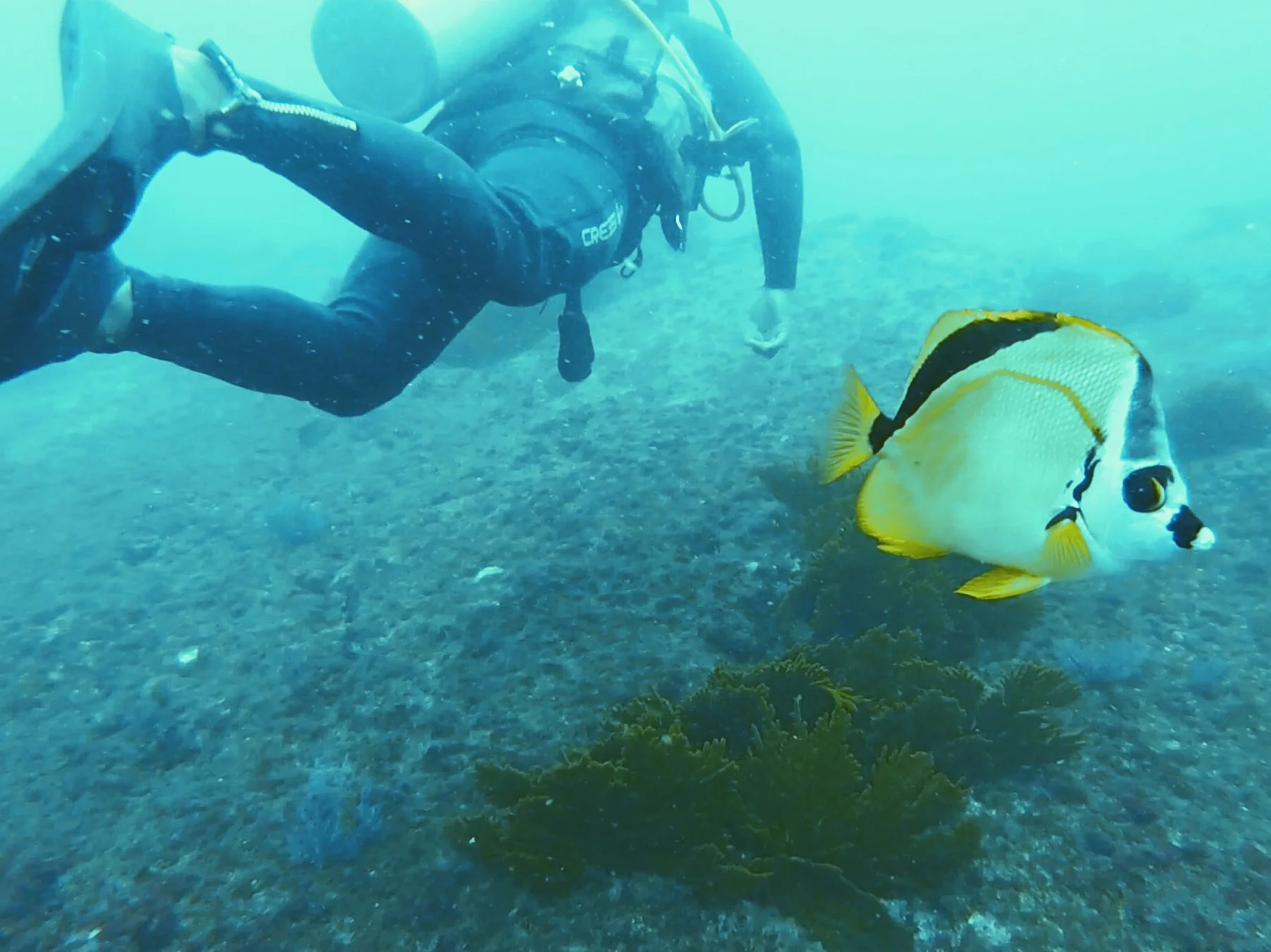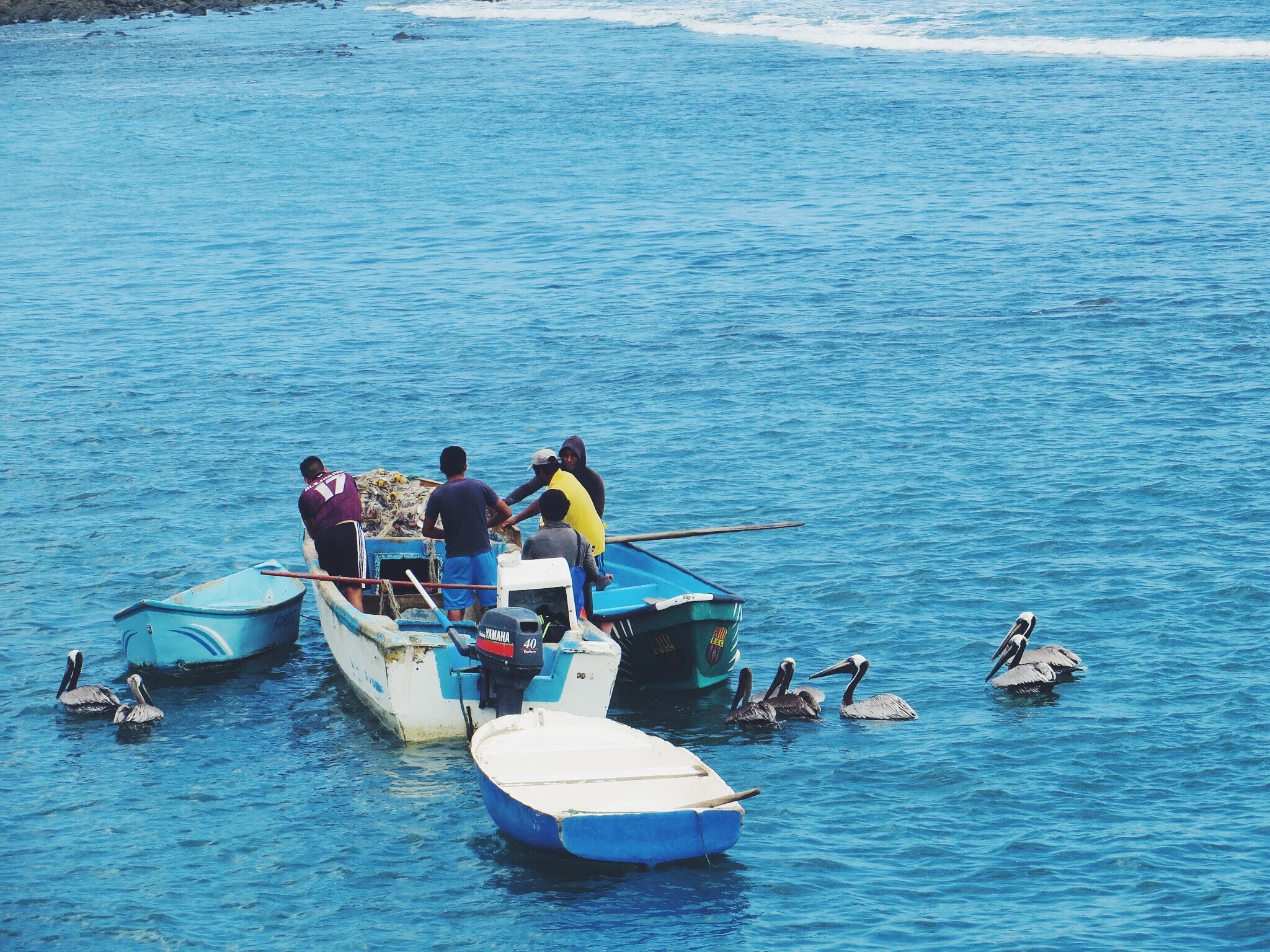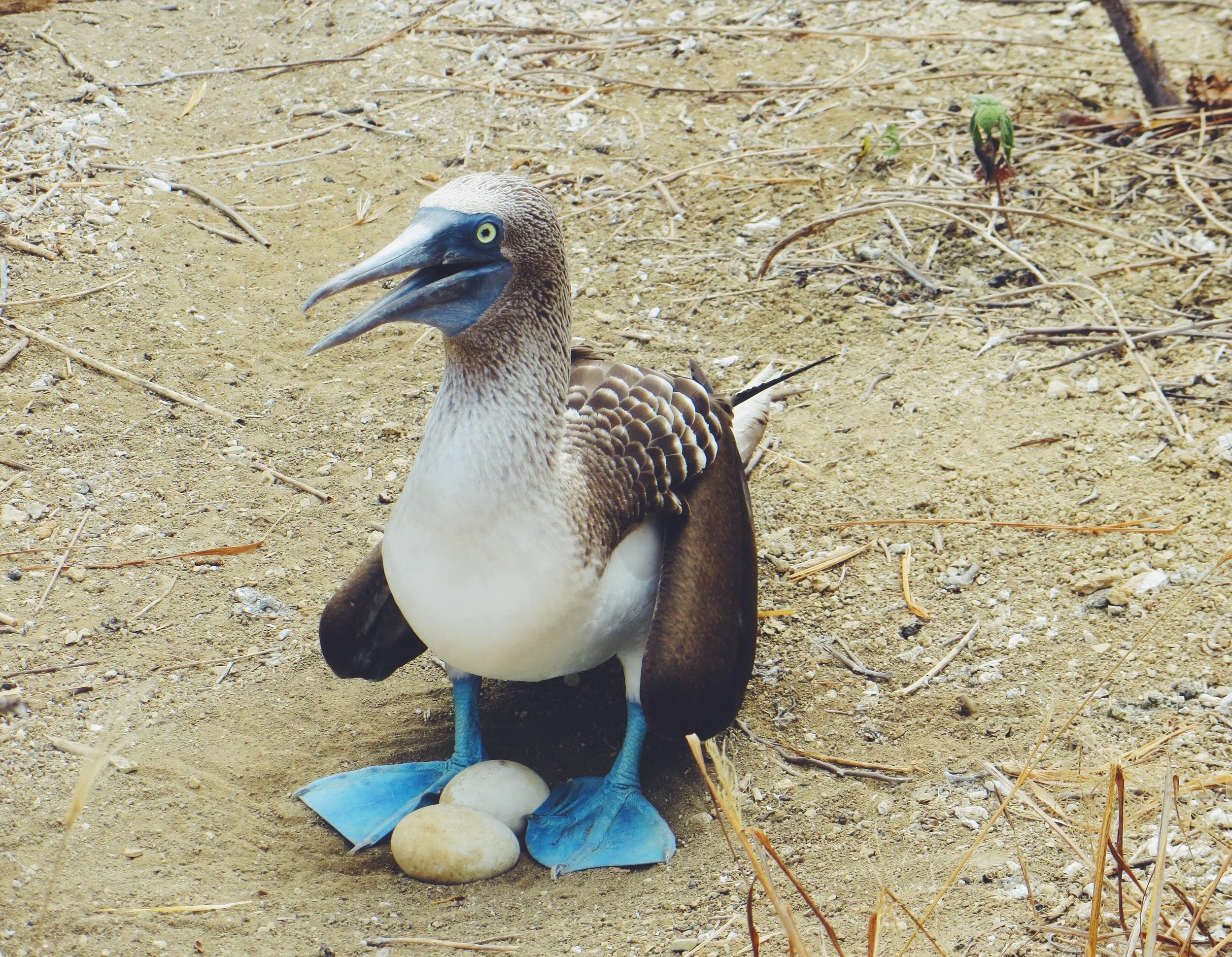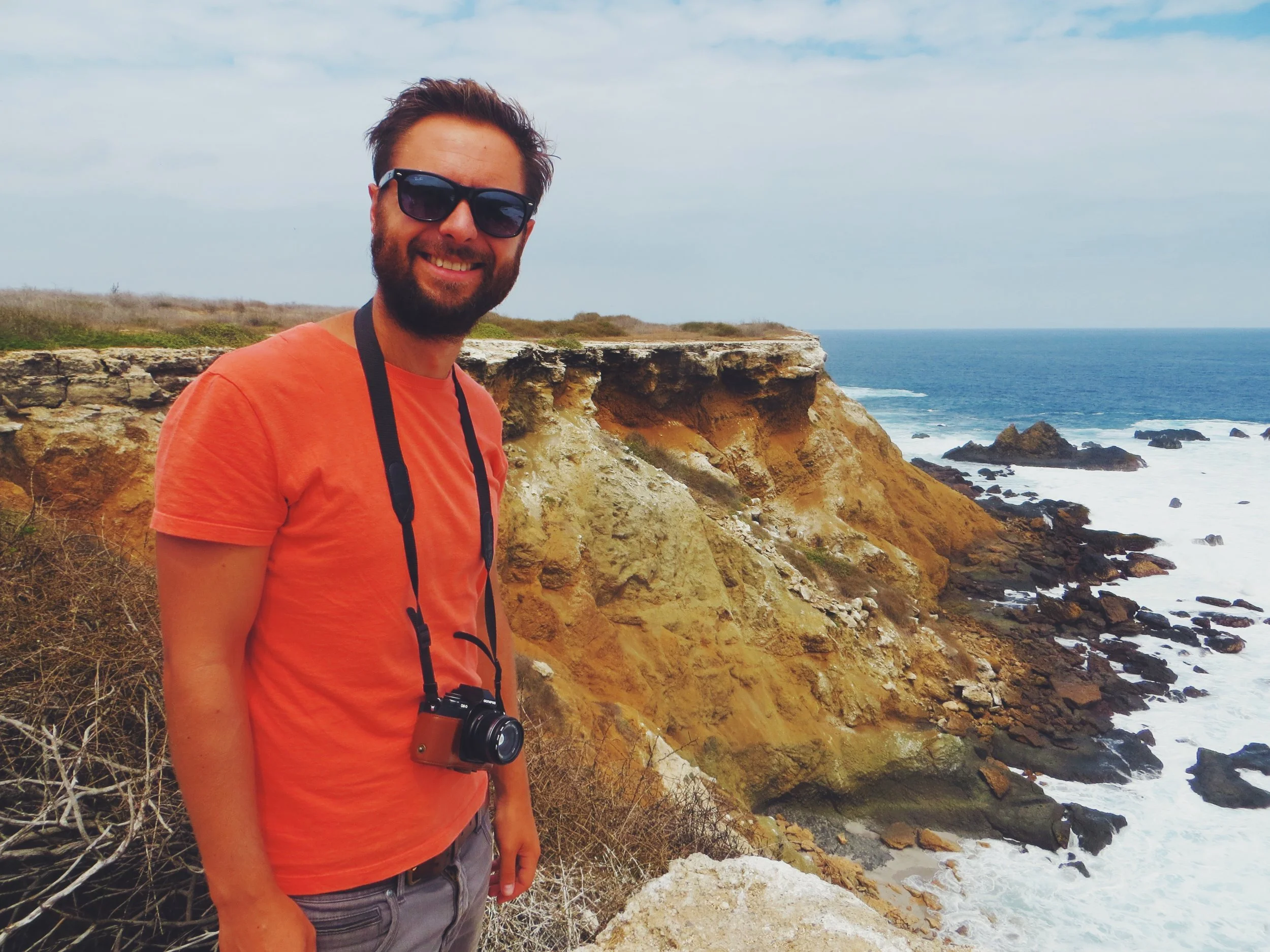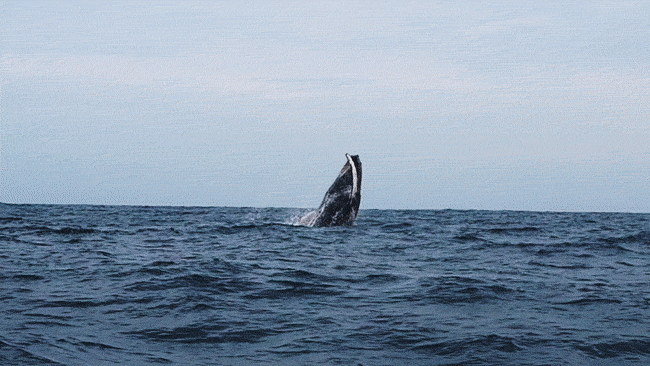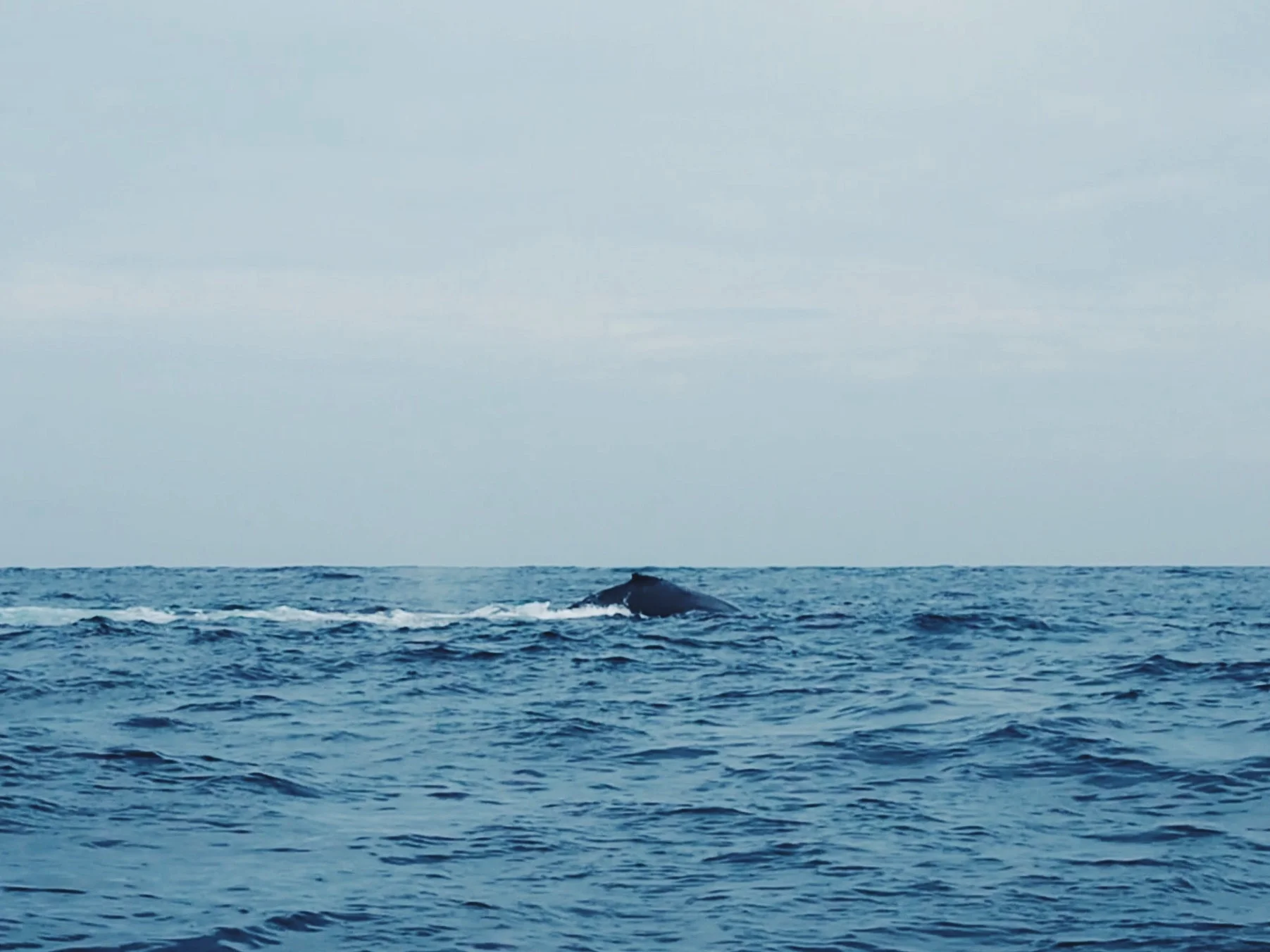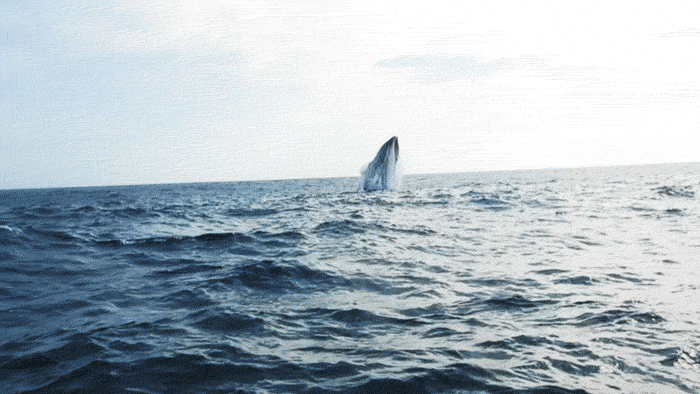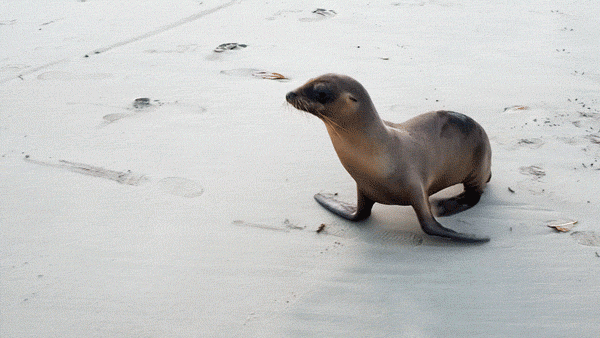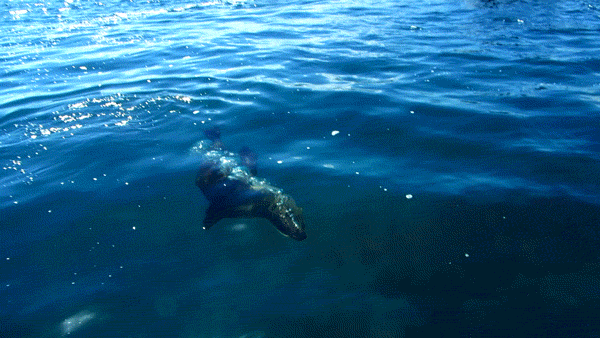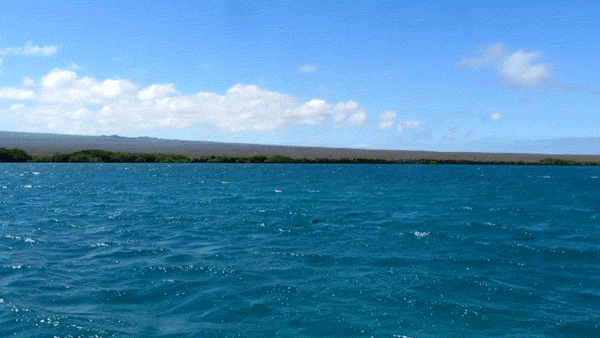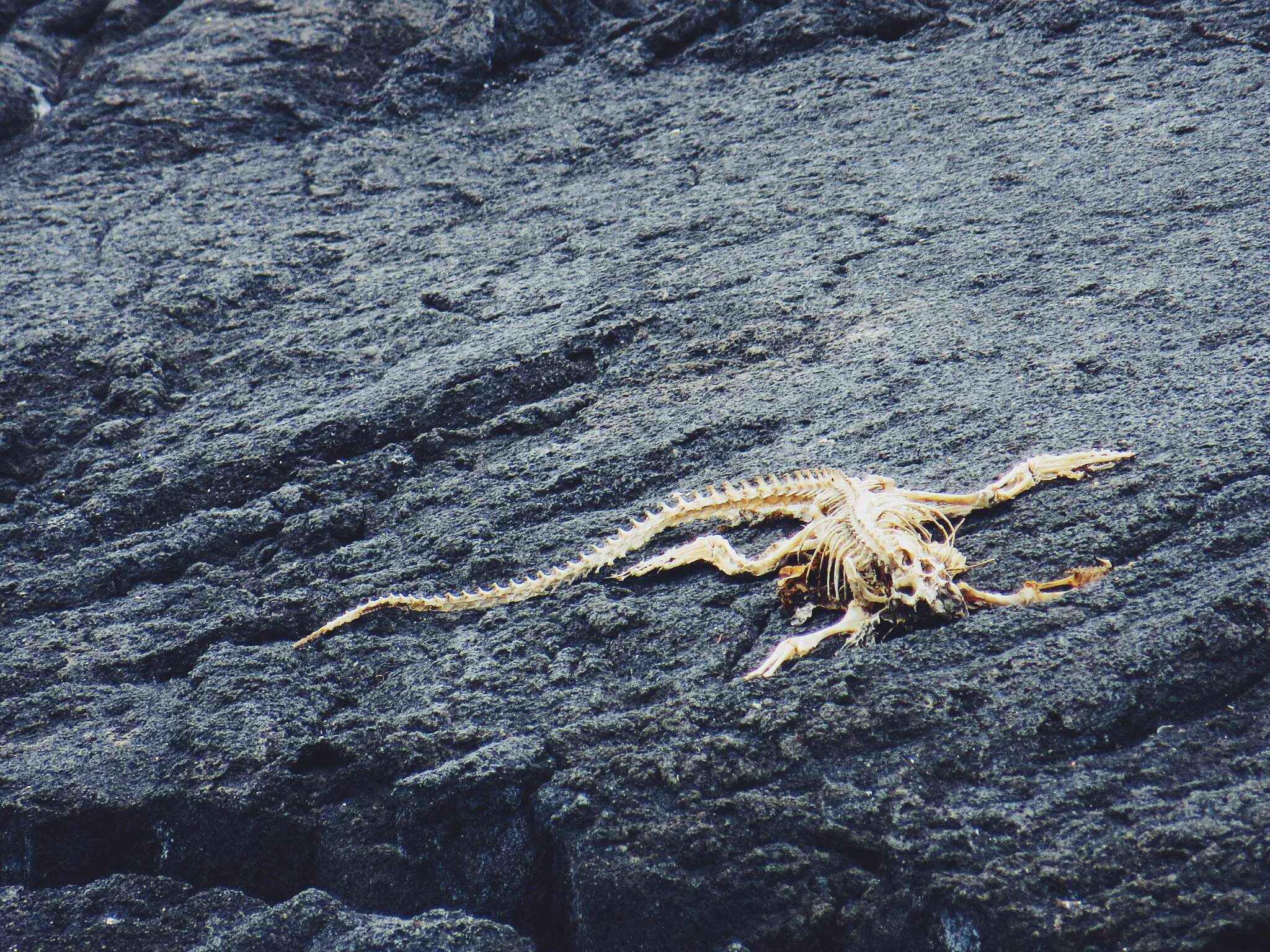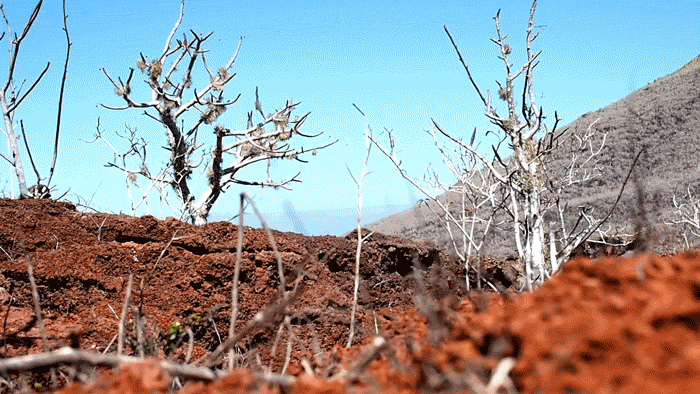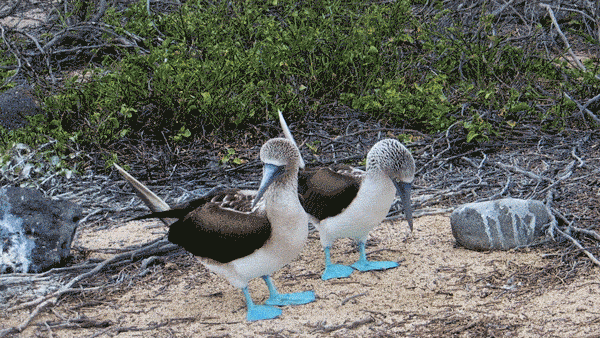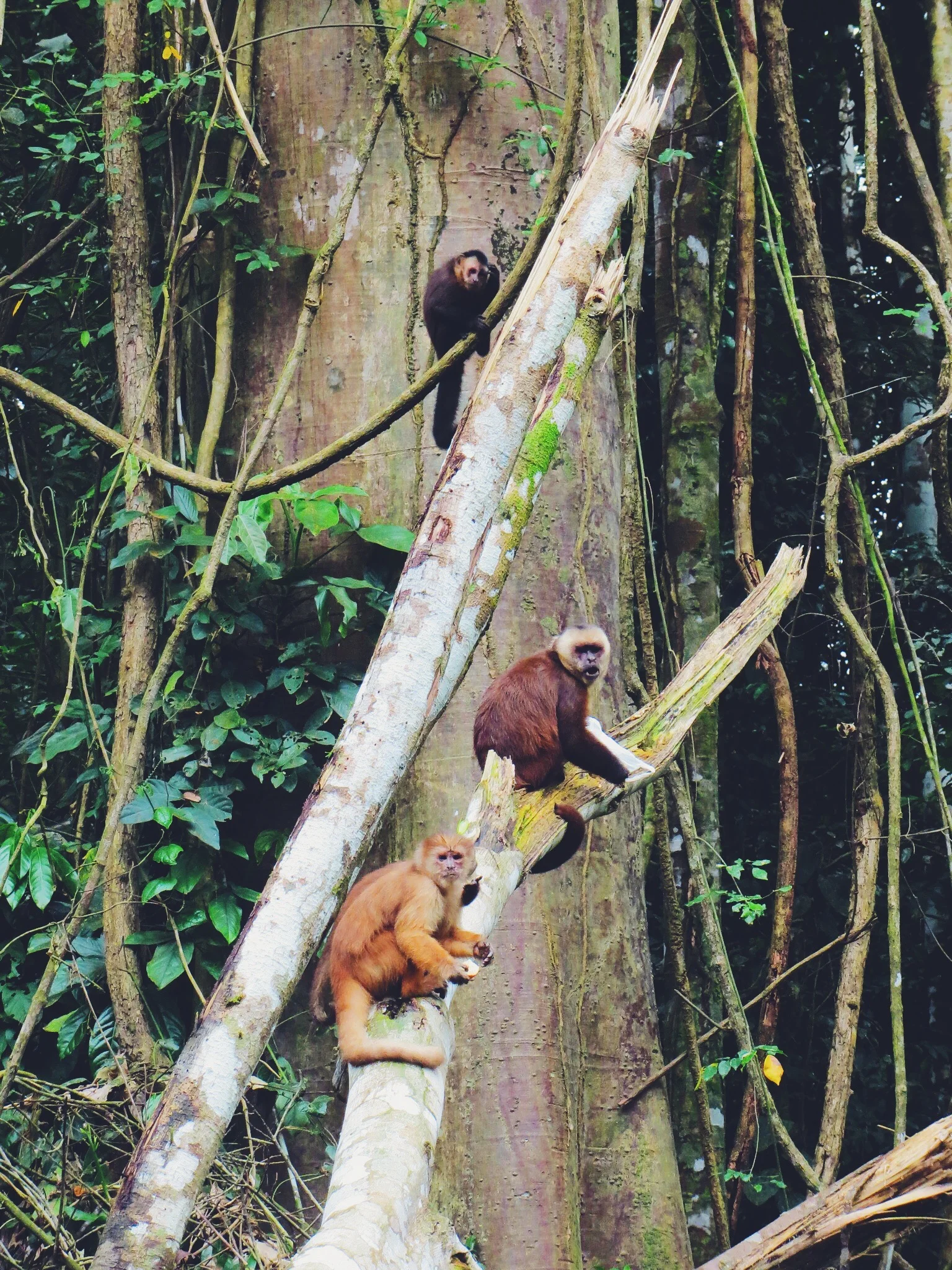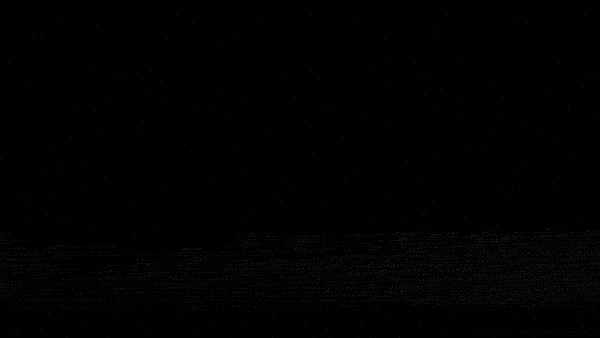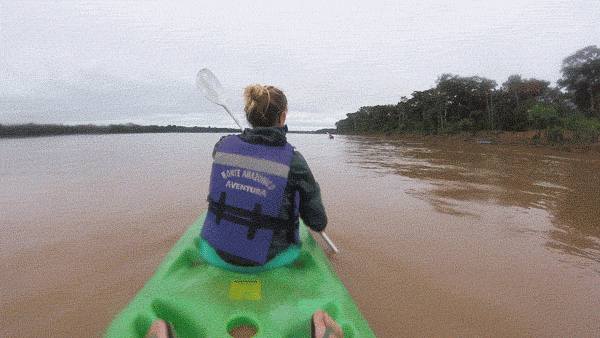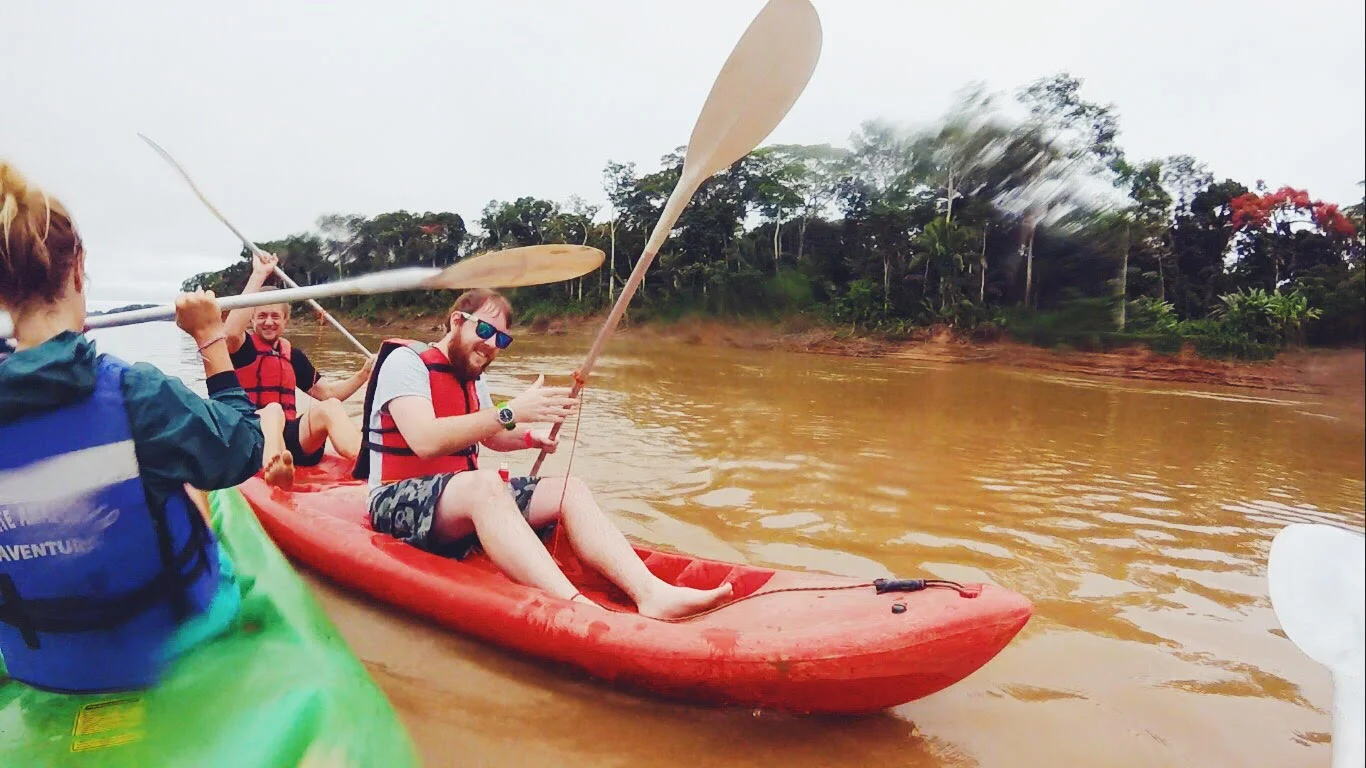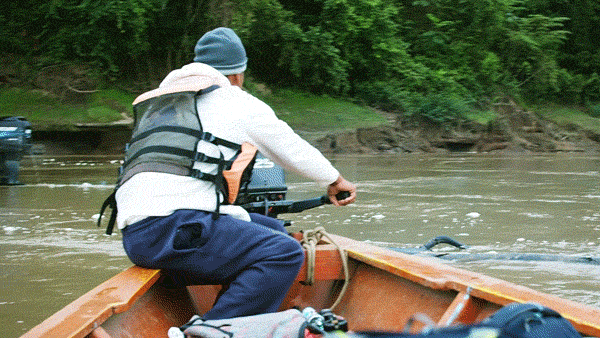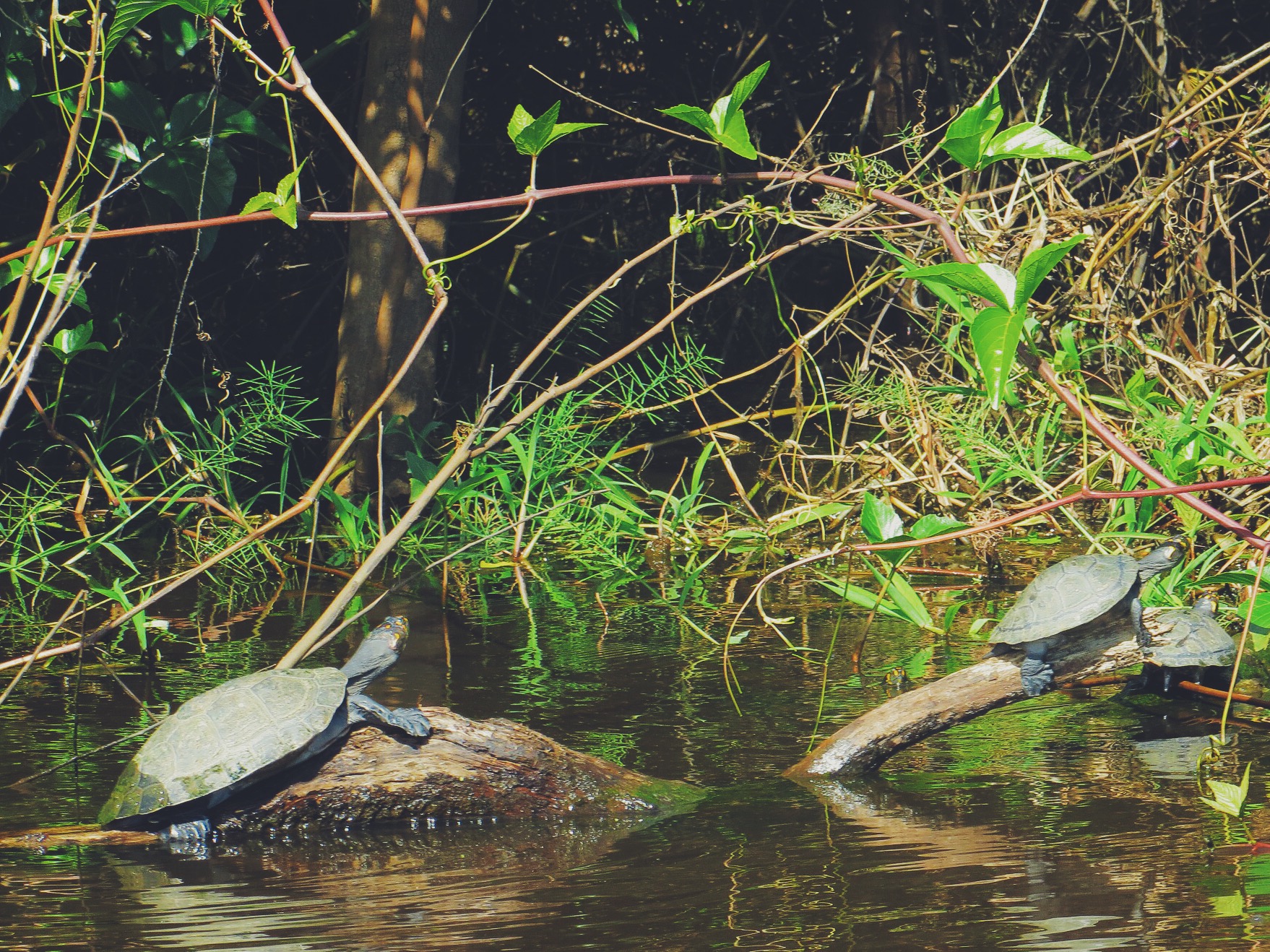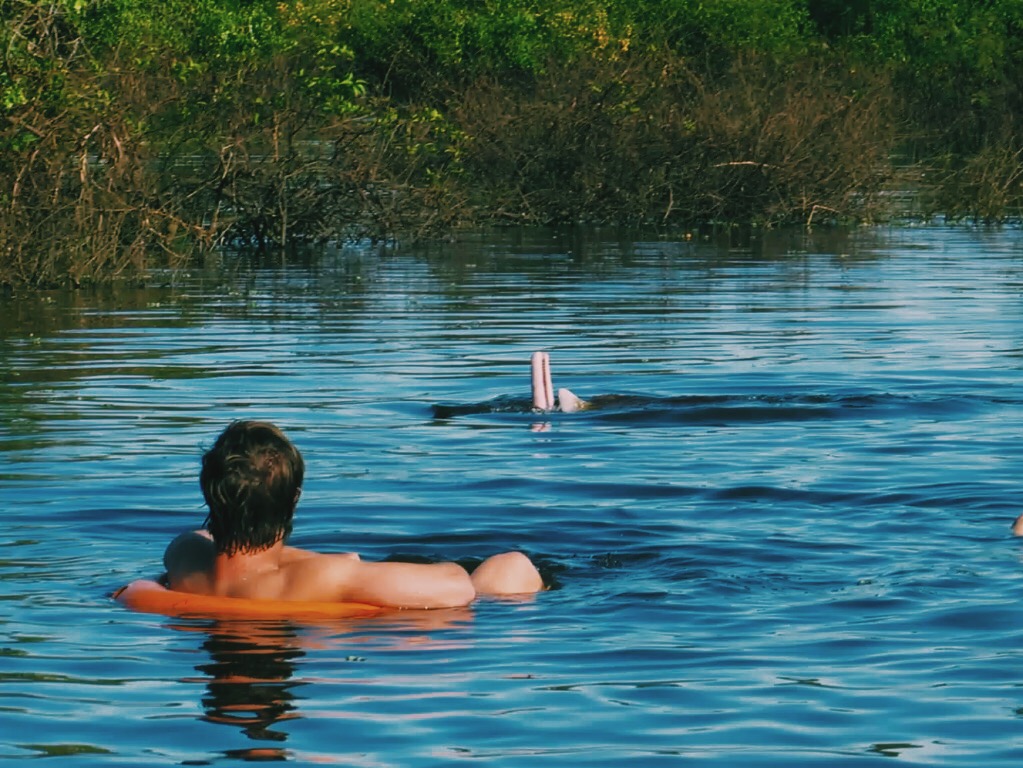Popayán and Salento
After a rather long-winded journey and border crossing from Ecuador, we had finally made it to Colombia! We were planning on reaching a pretty colonial city called Popayán by the following morning, but before that we wanted to visit 'Las Lajas Sanctuary', a basilica church just outside the border town of Ipilaes. We caught a cab to the bus station and bought tickets for the night bus that would leave around 9pm. After a twenty minute taxi ride we were dropped at the top of a hill (unfortunately with all of our bags) and made our way down the steps to the canyon of the Guáitara River where we were met by this spectacular church.
Bridging across a river gorge with it's intricate grey and white Neo-gothic decoration, it was an impressive and somewhat unusual sight for a small South American border town. We spent an hour or so taking it in from the various view points before grabbing a quick beer and watching the sun go down. Once it got dark the church was lit up in various different colours that faded from one to the other, showcasing the churches impressive form in fairytale style.
We then slowly made our way back up the hill with all our bags and eventually managed to share a cab with two Colombian ladies and headed to the bus station. After a hilarious 'lost in translation' moment which left them thinking Stef was the daughter of tennis player Steffi Graf, we said goodbye, boarded the night bus and vowed to try harder at learning Spanish! The bus was not as comfortable as previous ones, so without much sleep we pulled into Popayán at 4.30am and wearily headed to the station cafe to kill some time before the hostels opened.
Popayán
We took a cab to Hostel Caracol, which had good reviews and luckily for us 2 beds that were available at a good price. We only had a day to explore Popayán so once rested we set off, excited to experience our first full day in Colombia. Popayán, also known as 'The White City', is known for being one of the prettiest cities in the country. We wandered around the quiet colonial streets, taking in the many white stone buildings and churches. It was easy to see how the city got it's nickname.
After a while it began to rain pretty heavily, so we headed into La Cosecha Parillada Centro keen to try some traditional Colombian food. We had noticed by now that no one spoke English so we welcomed the chance to test out our (not so great) Spanish skills. We ordered the Bandeja Paisa, a national dish containing eggs, beans, avocado, pork crackling, pulled pork, steak and roast potatoes. It was like a combination between a full english breakfast and a burrito and was very tasty, not to mention incredibly filling!
Once the rain has passed we decided to work off our enormous lunch and see a bit more of the city. We walked through the square past some craft stalls and headed up the hill towards the Iglesia de Belen Santuario de Belen. After taking in the view from the top we headed back to the square and explored more of the old cobbled streets and buildings. We opted for a light dinner near our hostel and settled in for a decent nights sleep ready for another full day of travel ahead.
The next morning we grabbed a quick breakfast from a small cafe opposite our hostel and made our way back to the station by cab to get a bus to our next destination: Salento, a small colonial town located just north of Armenia in the heart of the Colombian Coffee region. There was no direct bus route from Popayán, so after 5 hours of bus travel we caught a 2 hour minibus from Armenia to reach Salento itself.
Salento
Salento is a bustling colonial town with brightly painted houses, great craft markets and restaurants and a great launchpad to explore the surrounding national parks. After getting dropped off by the minibus it was a short walk to Hostel El Zorzal, a peaceful hostel on the outskirts of town with lovely little bungalow rooms and friendly staff. After checking in we grabbed a beer in the pretty surrounding garden, teaming with colourful birds.
We set out to explore the small town and spent a wonderful hour or so taking photos of the colourful and picturesque buildings and walking amongst the gift shops selling beautiful gifts, jewellery, bags and clothing. We then made our way up the steps at the end of the main street and ascended to the look out point, with one side giving a view of the town, and the other side a fantastic view of the lush mountains of the surrounding coffee region.
By chance our lovely friends Amanda and Daniel (follow their amazing journey on Vivalavida) who we had travelled with in Peru had also arrived in Salento that day. After meeting them and catching up with their news we decided to try our hand at the traditional Colombian game of Tejo. Known as the national sport of Colombia, Tejo is a similar game to boules where the aim is to throw iron weights into a central iron ring set into a small clay pit. Small packets of gunpowder are positioned on the ring and explode on impact, gaining the player extra points. Intrigued and excited by this we couldn't turn down the chance to play!
Amanda (with her now perfect Spanish) had asked around and heard that the best place to play was at Los Amigos, a ranch style bar in the centre of town. For 10,000 pesos (£3) you got a beer and unlimited time to play, which was a fantastic deal! We were led into a barn type space where locals where hurling weighted balls across the length of the room and with sounds of splatting clay, exploding gunpowder and cheers. It was definitely one of the strangest games we'd played but we embraced the tradition and got fully stuck in. We played for about an hour (to varying degrees of success!) and then headed to the very pretty main square, soaked up the busy Friday atmosphere and sampled the local food trucks.
Trekking the Cocora Valley
One of the highlights of visiting Salento is a trip to the Cocora Valley, famous for the worlds tallest wax palms set amongst stunning green hills. After a great breakfast at our hostel we met with Amanda and Daniel in the main square and found a spot on one of the many colourful jeeps that shuttled visitors to the valley. After a fun (but cramped!) 30 minute jeep ride we were dropped at the entrance to the national park and set off along the trail in our wellies, waded across streams and headed into more dense forest with rickety wooden bridges and rushing water beneath us.
After crossing many bridges and walking up lots of slippery stone steps we ended up at our first stop, the Acaime Humming Bird sanctuary. We each gave a small contribution to the owners, and in return were given a hot drink and a snack. We stayed for an hour or so to marvel at the lush garden around us and tried to capture shots of the hundreds of colourful hummingbirds birds that had made this place their home.
We set off back down the hill and found the path that led us to a look out point. We stopped for a while to catch our breath and watched the clouds rolling past us through the valley below. We then continued through a forest of huge pine trees, yet another type of terrain, until we made it to a clearing where we got our first glimpse of a some of the impressive Quindío wax palms, the national tree of Colombia.
As walked a little further we spotted a huge, bright blue wasp dragging a tarantula through the grass. We all got pretty close to get a good look and take pictures, but it wasn't until later when we looked it up that we realised it was a tarantula hawk wasp, an insect that gives the second most painful sting in the world. It paralyses a tarantula, drags it back to its nest and lays an egg on its back. The wasp lava then eats the tarantula from the inside out - it was like something from a horror film! We might not have got so close if we had known but we're excited to have witnessed it.
It was pretty cloudy at this point, and so we couldn't see into the valley but were able to marvel at the height of the palms above us, some standing over 45 meters tall. The clouds continued to roll passed and suddenly the valley became visible, and we got a full glimpse of the wax palms dotted around the stunning green landscape. We wound our way through the impressive, prehistoric scenery and back to the starting point where we had to wait a while to get one of the jeeps back to Salento. The trek had definitely stood out as one of the most memorable of our trip.
Horse Riding & Waterfalls
The following morning Amanda had arranged for us to go horse riding to one of the nearby waterfalls through their hostel La Eliana (which also has a great restaurant). Following another tranquil garden breakfast at our hostel we met in the town and headed to some stables where the locals set us up with our horses. After some brief instructions we were on our way and rode out of the town and into the lush landscapes that surrounded Salento.
The weather that day was perfect for riding, and being just the four of us and our local guide made for a really memorable experience. We trotted and cantered whenever we got the chance, and after an hour or so we reached a spot to tie up the horses and made the short walk to a waterfall.
We changed into our swimwear and even though the water was pretty chilly it was very refreshing after our ride, and set in an idillic spot. After swimming as long as we could we got out and noticed hundreds of butterflies basking in the sun all around us. We managed to get some quick shots of them before mounting back on our horses and continuing on our rather steep and muddy ride back up to Salento.
We spent the rest of the afternoon wandering around the picturesque town, soaking up the atmosphere and milling amongst the craft shops and cafes. As it was Stef's Birthday the following day we all decided that it would be nice to ditch the backpacker budget for a change and get dinner from a highly recommended restaurant called Cafe Bernabe. We went for a very tasty steak with a blackberry sauce followed by birthday cake, and had a lovely evening enjoying the great food and company. Amanda and Daniel even offered to pick up the bill as a birthday treat!
Stef's Birthday
We woke the next morning to a spectacular sunrise from our hostel terrace, and Stef caught up with friends and family sending her Birthday wishes before checking out of our Hostel. Life on the road could be pretty fast at times so it was great to dedicate some time to catch up with loved ones properly. We then headed to Brunch de Salento to try the legendary peanut butter brownie. We both agreed it's only OK to have brownie for breakfast on your birthday! We then wandered over to Cafe Jesus Martin for an ice coffee and juice.
It was then time for the birthday surprise, and we headed up the hill and stopped outside the gates of the boutique hotel El Mirador del Cocora! We had the most beautiful double room with a balcony and our own jacuzzi overlooking the amazing Cocora valley. After opening a surprise pile of gifts (treats from Otavalo market and Salento) we spent the afternoon relaxing in the hot tub, listening to music and drinking wine. Birthdays don't get much better than that! We then headed out for dinner and cocktails in the town to to top off the day.
Our time spent in Salento was magic, and became one of our favourite destinations of the trip. From colourful buildings and bustling atmosphere of the town, to the incredible treks and horse rides through the stunning Cocora Valley, it had been an amazing mix of experiences. We had heard so many great things about Colombia from fellow travellers, and even after 5 days we were completely blown away. It was a perfect introduction to an amazing country, and we couldn't wait to explore more.

























